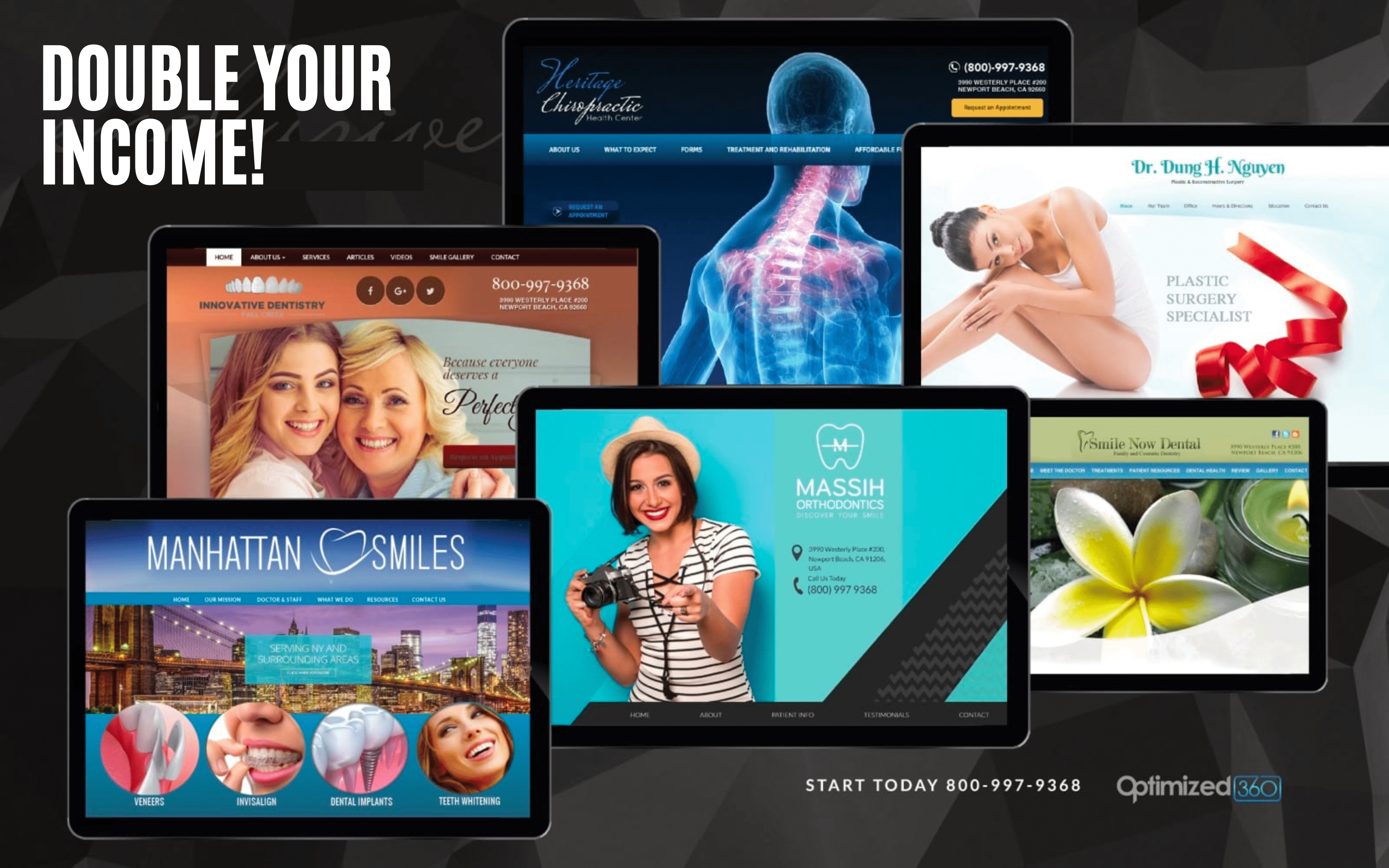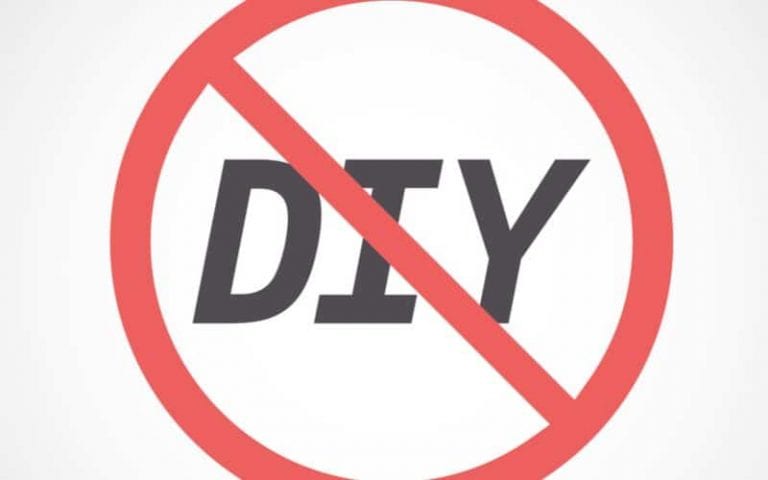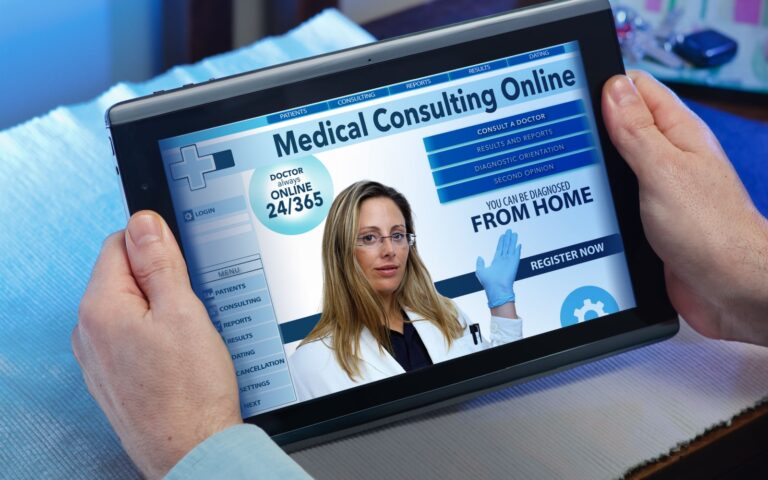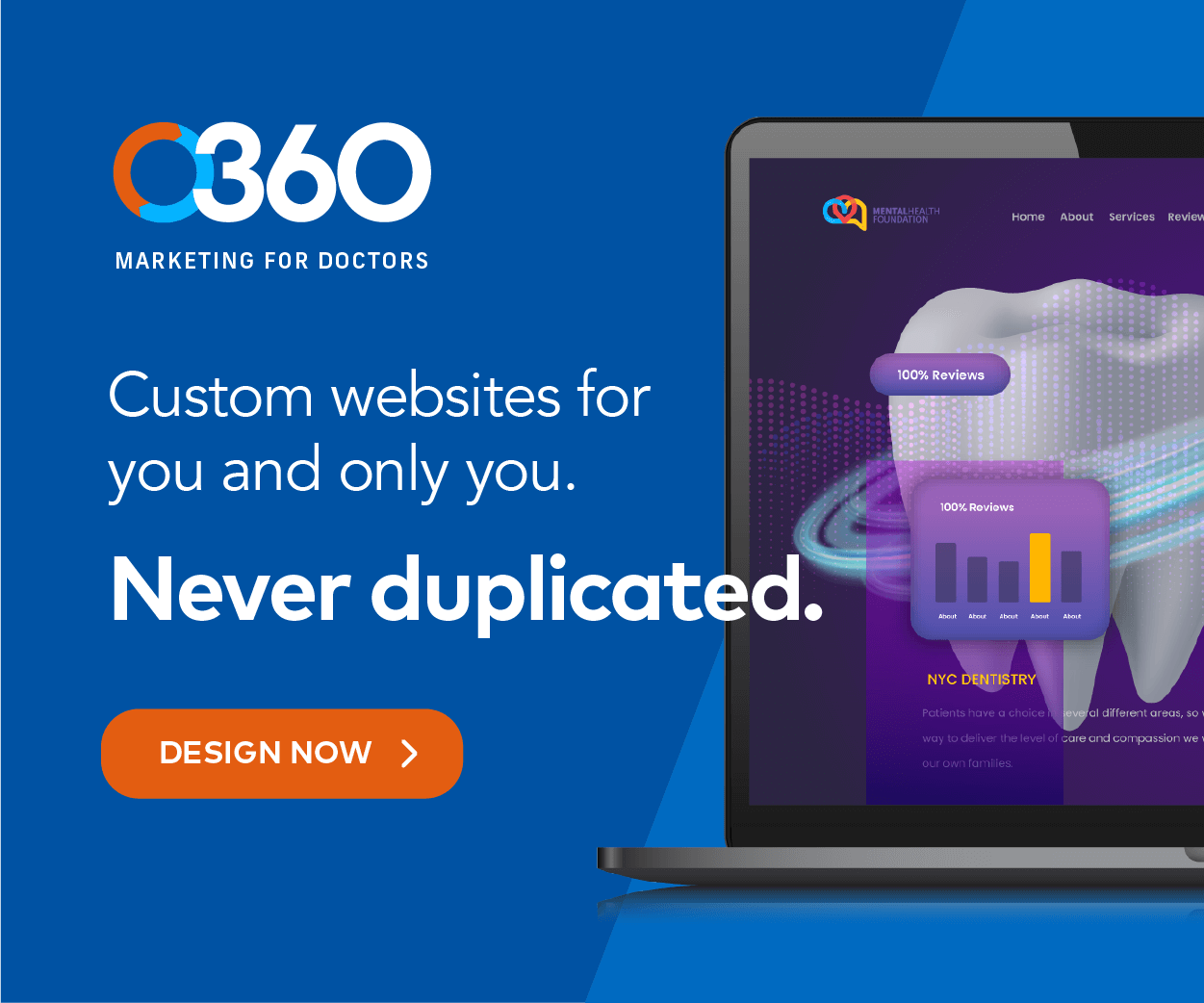How to get new patients to your dental office? What are the most successful methods of attracting patients to your practice?
Why is Marketing Needed?
There are more than 200 000 dentists in the U.S., with a total of 43,500 locations. The average number of practitioners per practice is three. There is a lot of competition. The main goal of marketing is to attract and retain new patients and to increase awareness of your brand.
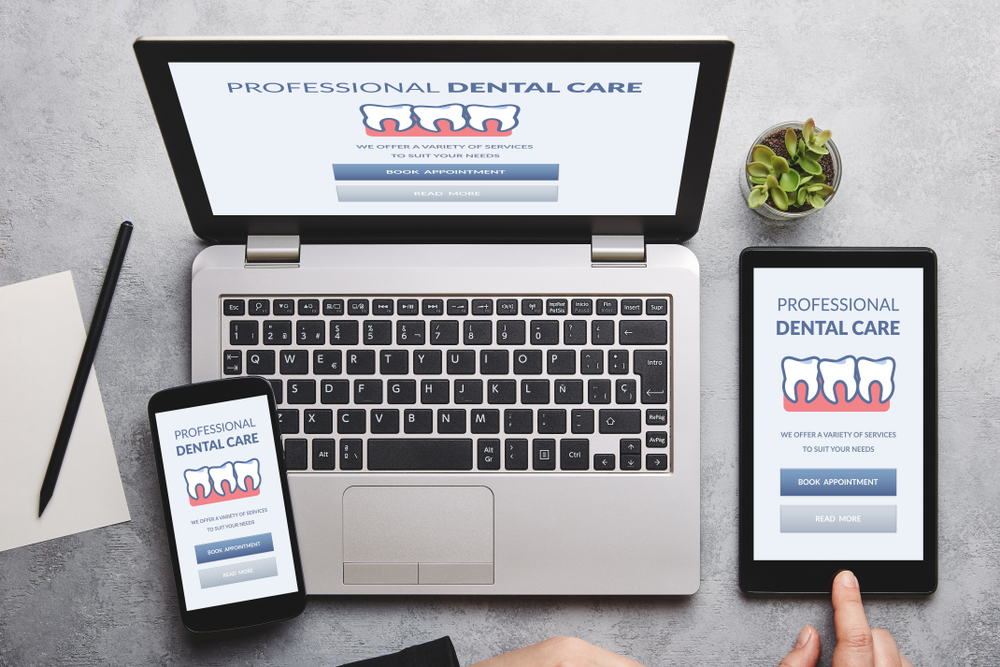
Marketing is not just about bringing people in; it’s also about retaining them so they keep coming back. If you have been operating your dental practice for some time now, you have already succeeded as a dentist. However, something needs to be fixed if you are reading this article. You may be starting a new practice. Things may have plateaued, or new patients are harder to come by.
Our understanding of dental marketing is only sufficient if we first grasp a few key concepts. Dentistry marketing doesn’t occur in a vacuum. Your success will take time. Your success relies on understanding how others function. You cannot merely follow the herd. You must be proactive, as others’ activities and the market dynamics around you matter. If you want to succeed, you must establish long-term and short-term objectives.
When you market your practice, you increase its value. When marketing does not increase profit, it at least raises the value of your office by increasing the gross revenue. Marketing may enable you to expand by bringing in new associates or adding personnel and chairs; you can expand your practice even if you currently have enough patients. This article will review 101 different ways of marketing your dental practice.
Creating a Marketing Plan
These are the main steps in developing a marketing plan:
- Analysis of your current status by data gathering
- Setting your goals and objectives
- Review of ideas and deciding about the strategy
- Determining the total budget and its distribution among campaigns
- Execution and implementation of the strategies
- Measurement and optimization of the plans

Analyzing your market
Patients
First, you need to understand your target market.
- Who are you trying to reach?
- What are the demographics?
- What are their age and income level?
- What are the everyday dental needs?
Once you understand your target market, you can create marketing campaigns that resonate with them. For example, advertise your family-friendly services or offer discounts to new patients if you’re trying to reach young families. If trying to get seniors, highlight your experience and provide convenient appointment times. No matter who you’re trying to reach, understanding your target market is the first step to success.
Competition
The second part of the analysis is learning about other dentists in your area. Knowing who your competition is and what they’re offering is essential. This way, you can determine what makes your practice unique and use that to your advantage. To start:
- Look at the type of practices in your area. Are they small, family-run businesses? Or are they large corporate chains? The answer will give you an idea about the type of marketing that will appeal to your potential patients.
- Next, look at the services that your competitors offer. Can you offer something that they don’t?
- Finally, take a look at your competitors’ selling points. What do they do well?
By understanding your competition, you can find gaps to fill and advantages to highlight.
Setting Goals and Objectives
Be SMART (Specific, Measurable, Achievable, Realistic, and Time-Bound). Here are the steps:

First, decide what you want to achieve with your marketing. Do you want to increase brand awareness? Drive more traffic to your website? Generate more appointment requests? The goal indeed is to get new patients, but you need to get a little more technical. What is the first step in the process of getting this new patient? It can be a visit to your website. Now you can plan for that first step.
Second, start setting specific goals. For example, you could set a goal to double your social media following in the next six months. Or set a goal to increase your website’s traffic by 20% in the following month.
Finally, plan the exact steps once you’ve set your goals. That is where your objectives come in. Objectives are specific, measurable, and achievable actions you will take to reach your goals. For example, if your goal is to increase your website’s traffic by 20% the next month, your objective could be to write and publish three blog posts per week.
Determining Your Budget
Research
What is your current situation?
- The volume of patients.
- Their average acquisition cost.
- Average annual revenue per patient.
- Your risk tolerance.

Using the numbers, follow this example. Let’s say your average cost per patient is $300 and that you want ten new patients monthly.
You can perform the following calculations to determine your budget:
10 × $300 = $3000.
You need to set aside $3000 each month to achieve your goal. That may seem like a lot of money, but it’s important to remember that marketing activities are an investment, not an expense! If your per-patient revenue per year is $3,000, one patient’s income will pay the marketing cost to acquire ten patients, which is pretty good.
As a general guide, a regular practice with an average income should spend 10% to 15% of the gross revenue on marketing. Again, this depends on many factors, but it is a good starting point.
How Much Can You Afford?
Break down marketing into two main categories: hard and soft.
Hard marketing activities include things like advertising, direct mail, and Yellow Pages ads.
Soft marketing activities include things like PR, events, and email marketing.
Try to employ a mix of these two methods.

For example, let’s say your target is getting ten new patients per month, and you plan to attract these patients using the following marketing activities:
- Online Advertising
- PR or in-Person Marketing
- Events (community outreach)
- Email marketing
You then estimate how many patients you will likely get per marketing service.
- Online Advertising = $300/patient
- PR or In-Person = $500/patient
- Events = $200/Person
- Email Marketing = $250/patient
Each marketing method has its limitations too. For example, it may be true that in-person visits to businesses may have cost you $500 per patient in the past, but you know you only can get an average of 2-3 patients per month that way, and spending more will only solve the problem.
Also, you are estimating. Your numbers may need to be corrected. It depends on what others do as well. So, the safest bet is to combine methods and make sure you at least pick one hard and one soft marketing technique.
For example, you can do this:
- Online ads = 5 patient at $300 each = $1500 total cost
- Events = 3 patients at $200 each = $600 total cost
- Email marketing = 2 patients at a $250 total cost
That means your monthly budget for this month will need to be $2,350. Each month you will need to review and adjust. You should shift to a different marketing method or increase and decrease your allocations. But you know that, on average, it costs around $2500 to get ten patients, so any marketing method that can get you patients for around or less than $250 should be pursued.
Branding
Branding has become a buzzword in the business world, but what does it really mean? It’s a complicated concept encompassing many aspects of your dental practice, including your logo, website, stationary, colors, and even your office design and furniture. Branding also includes how you treat your patients, how you talk to them, and what general experience they have when they visit your practice.
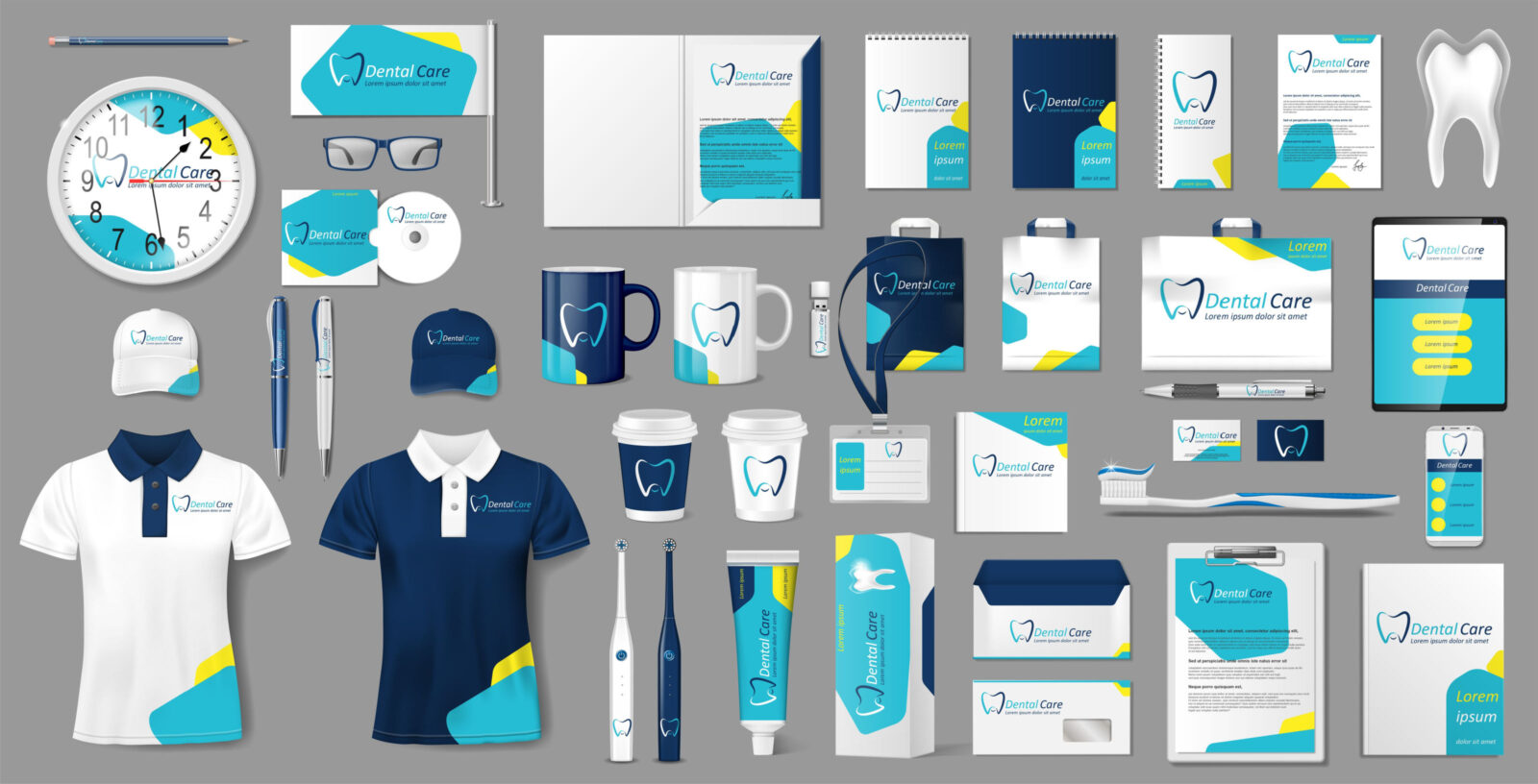
Branding has two main focuses – your identity and your image. Your identity is who you are. It’s how people see you and how you’re known. Your image is what people think of when they think of your identity.
Contrary to popular belief, branding is more than just nice graphics and design elements. At the same time, that’s a big part, what those graphics are used for really matters. The main goal of a dental brand is to create awareness of your practice, build loyalty between you and your patients and deliver on their expectations about the level of quality service they can foresee from you.
Definition
Branding is developing one or more characteristics representing a product, service, business, individual, or organization. Branding is worth the investment because it creates long-term effects and helps you develop a memorable identity.
Building a Brand
The cornerstone of building a brand is defining your target patients. You want to be able to describe the type of person you want in your practice to identify the best ways to connect with them. For example, if you’re targeting young professionals from upstate New York, consider hiring a marketing agency or designer with experience in marketing towards this age group. You can also research what’s already working for other dental practices in similar niches and try to target the same types of patients; for example, if you’re a pediatric dentist targeting young parents, look at the popular apps and websites they use. If you’re an orthodontist targeting teenage girls, look at their social media accounts and the popular TV shows they watch.
When your brand is finalized, and all components are designed and established, the most important thing is consistency and maintenance of that image in terms of design elements and patient experience. Successful branding is the foundation for all marketing activities.
In-Office Marketing
In-office marketing includes designing and distributing any material that a dental practice wants to circulate and display to their patients while in the office. In-office marketing materials include brochures, posters, videos inside the waiting area, before and after images, business cards, dental insurance forms, etc.

In-office marketing aims to make patients aware of the services available at the practice and all relevant information regarding the services. It also promotes brand awareness and gains name recognition for a dental practice among potential new patients when these materials are organically distributed among a patient’s family and friends. It should be designed so patients will think positively about your practice and remember your name when they see it.
There are five channels for inside marketing:
1) Informational
These materials work well because it provides valuable information without being overly promotional. It can be a doctor’s bio or the technology the office uses.
2) Educational
Sometimes, practices want to educate people about oral health and dental hygiene. These educational materials build goodwill and also is an indirect way of promoting brand awareness. Such material may be distributed and shared with family and friends organically.
4) Functional
Issuing business cards for every staff member, including interns and part-time workers, is a low-cost way to promote your name. For example, an intern who has never worked loves showing off their business cards to family and friends.
5) Reciprocal
Another method is exchanging marketing material with related businesses. For example, you would display brochures of your neighbor physician in return for them doing the same. This is marketing at no cost with good potential.
6) Promotional
The last method is a direct promotion or special offer for a specific procedure or treatment. Examples are brochures for discount dental plans or postcards with in-office teeth whitening offers.
Lastly, a bonus category is appointment reminder cards that can contain a marketing message, a discount, or just a logo and branding colors to serve as a brand reminder.
Print Advertisement
Even though the effectiveness and use of print advertising have declined during the last few years, it still has potential. There are several types of print ads, including:
- Newspapers
- Magazines
- Coupon books
- Billboards
- Yellow pages
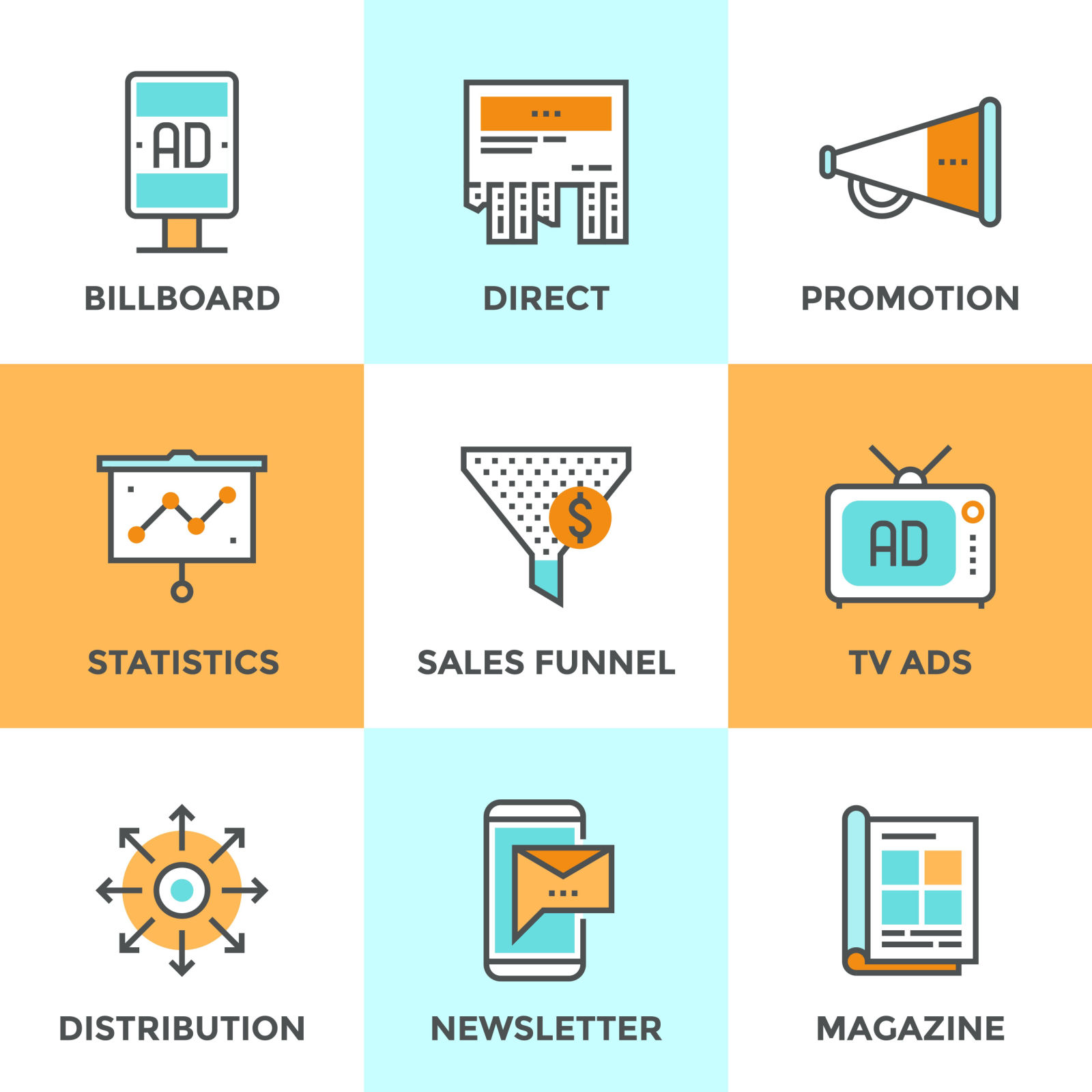
Print Ads
If you’re looking for a way to reach many people quickly, newspapers and magazines are great options.

Coupon Book
Another option for a dentist is coupon books. These give readers a discount if they make an appointment with your office within a specific date. This way, you can advertise periodically or share coupons with other businesses.
Billboards
Billboard ads can be effective if you target a specific geographic audience or live in an area with many drivers (billboards along highways).
Yellow Pages
Yellow Pages still work for residents who use the phone book as their primary source of information. There is still a small group of elderly that still do that.
Pros and Cons
Consider the pros and cons of each method. For example, magazine ads will likely be more expensive than newspaper ads because they are longer, more detailed, and often in color. You will probably have to pay a writer and an editor to check the ad before it is published to ensure it is grammatically correct and error-free. At the same time, magazine ads get more attention than newspaper ads because they are longer and give the reader more time to see the ad while reading through the magazine.

Magazine ads are considered a more “classy” option as well.
Ad Design
Design in a way to make potential patients feels like they know you and are comfortable with your team.

Be relatable
The way you present yourself in an ad says a lot about you.
- Are you professional?
- Is there a friendly office atmosphere?
- Do you listen?
- Is your staff caring and helpful?
Display the benefits
One of the main things people need to know about any business is how it can help them.
- What do you offer patients?
- Do you prioritize their comfort, or are they left alone in the chair for hours on end?
- For children’s dentistry, do you have a fun playroom for kids to occupy themselves while their parents wait?
Dental ads should highlight the benefits to potential patients rather than all of your technical skills and accolades.
Design ads professionally.
Remember that dental ads will only be effective if designed professionally. Your ad needs to look like it was designed by someone who knows what they’re doing; otherwise, any trust built up will dissolve. The first thing that comes to mind when people see an ad is its appearance. Your ad must stand out from the rest by being visually appealing. The font style and size should be easy to read.
Focus on patients’ wants
To convey your message in a memorable way, you must focus on what patients want rather than what they need from their dentist. Your advertisement should highlight why you can deliver what they want.
Use relatable graphics
People respond better to visuals besides text than text alone. Try using images related to your services, such as toothbrushes. Relatable also applies to patients’ demographics. When choosing images of people, you want to use images that reflect the ethnicity, age group, and type of family you like to target. Even the background should match the geographic landmarks and nature in your area.
Double-check grammar and spelling.
When you write an ad for a magazine, make sure it has no grammatical or spelling mistakes. This is one of the most significant ways patients judge your business, so ensure you proofread every sentence before publishing it!
Highlight your expertise
What’s important to remember that people don’t always buy products because they’re presented with facts and arguments about why they should make the purchase; sometimes, the overall experience leads them to choose. So if you’re looking for people to have great experiences at your practice, you must start by presenting yourself as a credible and professional business through all your marketing materials.
Will people read my ads?
It’s easy for a dentist to be tempted to place an ad in a beautiful magazine. However, these ads are far from cheap and come with many risks. Before you make a decision that could harm your practice, take some time to consider why magazine ads are only sometimes worth the money they cost.
Be careful about these downsides:
- Low-quality material – Many magazines are printed on low-quality paper that will often turn yellow over time.
- Low design quality – Unless you have your designer, many magazines offer a template that everyone uses that is generic and underwhelming.
- There’s also no guarantee that anyone will read your ad – it could end up being buried between an article and some coupons or hidden on the last page where people never look.
The best way to ensure that your potential patients will see your ad and take action is to ensure it looks like something they want to read.
Reasons ads fail
- Amateurish design
- Ads not centered on a single idea
- Too many words are used to describe what’s being offered
- Text size too small or too large for the page layout
- Graphics not relevant to the ad subject
- Use of people in the ad that are not relatable to demographics
- No clear call to action
- No differentiators or reasons to stand out
Print ads behind supermarket receipt
Radio Ads
Radio is more effective than many other forms of advertising, according to a study by the Radio Advertising Bureau. It found that 89 percent of listeners recall at least one radio ad they heard on a preceding day, compared with only 54 percent who can remember seeing an outdoor billboard and 49 percent who can recall seeing a print advertisement.

Radio listeners also remember more about the ad than TV viewers. According to Arbitron, 67 percent of people who saw or heard an ad said they could remember it later on, compared with only 38 percent of TV viewers who could do so.
Radio ads are an excellent way to reach a broad audience quickly. They can be done live or pre-recorded and used in conjunction with other forms of advertising, such as print and online ads.
Radio ads are typically played during morning and afternoon drive time, which means they reach listeners commuting to or from work or school. These individuals are more likely to be receptive to hearing about your practice because they have time while driving.
Some disadvantages of radio ads
Radio has its limitations when it comes to targeting specific audiences. You can’t use demographics like age or gender to pinpoint your audience because those attributes don’t apply to the medium’s programming or content. However, some address this issue by running ads on music stations. Often the type of music one listens to relates to their age and other demographic factors.
Knowing how many people tuned in or out during your segment is also challenging. This issue is addressed today because many listen to radio via streaming services like Spotify that are traceable.
What should be in a radio ad?
One approach is to create an original jingle or slogan that will stick in people’s minds long after they’ve heard the ad. Many principles of writing ads in a magazine (discussed before) apply to radio ads too. Here are some of them
- Highlight the benefits
- Stand out somehow
- Pay attention to your image
- Be relatable to the audience
- Use a clear call to action
TV Commercials
Television commercials are an effective way to reach a large audience. They can be especially effective when you target the right audience, use the right imagery and produce the commercial at the right price.

There are several things to consider:
Commercial production
Produce the ad professionally. You can hire a company specializing in creating commercials or use your video equipment and hire an editor or director.
Targeting your audience
It’s essential to consider the demographics of your area. If you live in an area with most people (50+), your commercial should focus on them even if the ad feels dated to you.
If you live in an area with many families with children, you as may need to be ‘cute’.
Advantages of TV Ads for Dentists:
1. Reach a large audience
A nationwide Nielsen survey found that in 2021, Americans watched an average of five hours and 48 minutes of live TV daily. That’s more than 1 billion hours each day!
2. Target specific demographic groups
Television networks can help pinpoint specific demographics since they know who watches what. Targeting allows advertisers to target their message to specific groups while avoiding spending money on those who wouldn’t benefit from their services.
3. Low cost per impression
Local television ads are inexpensive compared with other media, such as magazines or newspapers, because they reach so many people simultaneously. A 30-second spot during prime time can cost as little as $10 CPM (cost per thousand impressions) at your local stations. The main cost is the production which is addressed below.
Disadvantages of TV Commercials
1) Cost
The price tag for producing a single TV commercial can be as high as $50,000! That is why many small dental practices don’t use this form of advertising. But many premade and customizable TV commercials have recently been available from low-cost companies. Search Google for ‘premade TV commercials’ and find what’s available to your specialty.
2) Competitiveness
Lots of competition, so it is hard to stand out from the crowd!
3) Limited reach
Not all viewers watch the same programs. So, it is hard to reach out to a wide range of people by one type of commercial on one channel.

The steps in TV commercial production
- Determine the production method
- Do it yourself
- Buy premade templates
- Use professional producer
- Brainstorm Ad creative
- Consider goals and objectives
- Decide on the target audience
- Define your message and story
- Keep the ad interesting and real
- Choose a TV station from these options
- Cable stations
- Local stations
- Specialty stations
- Purchase the ad from
- Local stations
- National brokers
- Online auctions
While media ads may seem like an old way of marketing your dental practice, they have returned. The new streaming options and targeting capability have given radio and TV ads new life. It is well worth exploring.
Billboard Ads
Billboards are an effective way to advertise. They’re great for geographic targeting, and they’re great for the working population.

Billboards are also more memorable than other forms of print ads. The repeated view is guaranteed—you can’t ignore it! And because billboards are in such high-traffic areas all over town, they have a very high chance of being seen by many people, who may then tell their friends about them.
Disadvantages
Cost. The main disadvantage is that billboards can be expensive. They cost more than other forms of advertising, like newspapers or magazines.
You’ll also need to consider whether billboards work for your target audience. An image of a classy, sophisticated practice may be challenging to reflect via a billboard.
And lastly, if they’re driving through town in their cars at night, they might miss the message on your billboard unless it is lit.
Poster Ads
Poster ads are a great way to reach potential customers in high-traffic areas. If you’re trying to advertise your business as a dentist, for example, you can put up posters in the lobby of your office building or on the walls of a nearby grocery store. You can also place them on bulletin boards at local schools, churches, libraries, community centers, or even near bus stops.
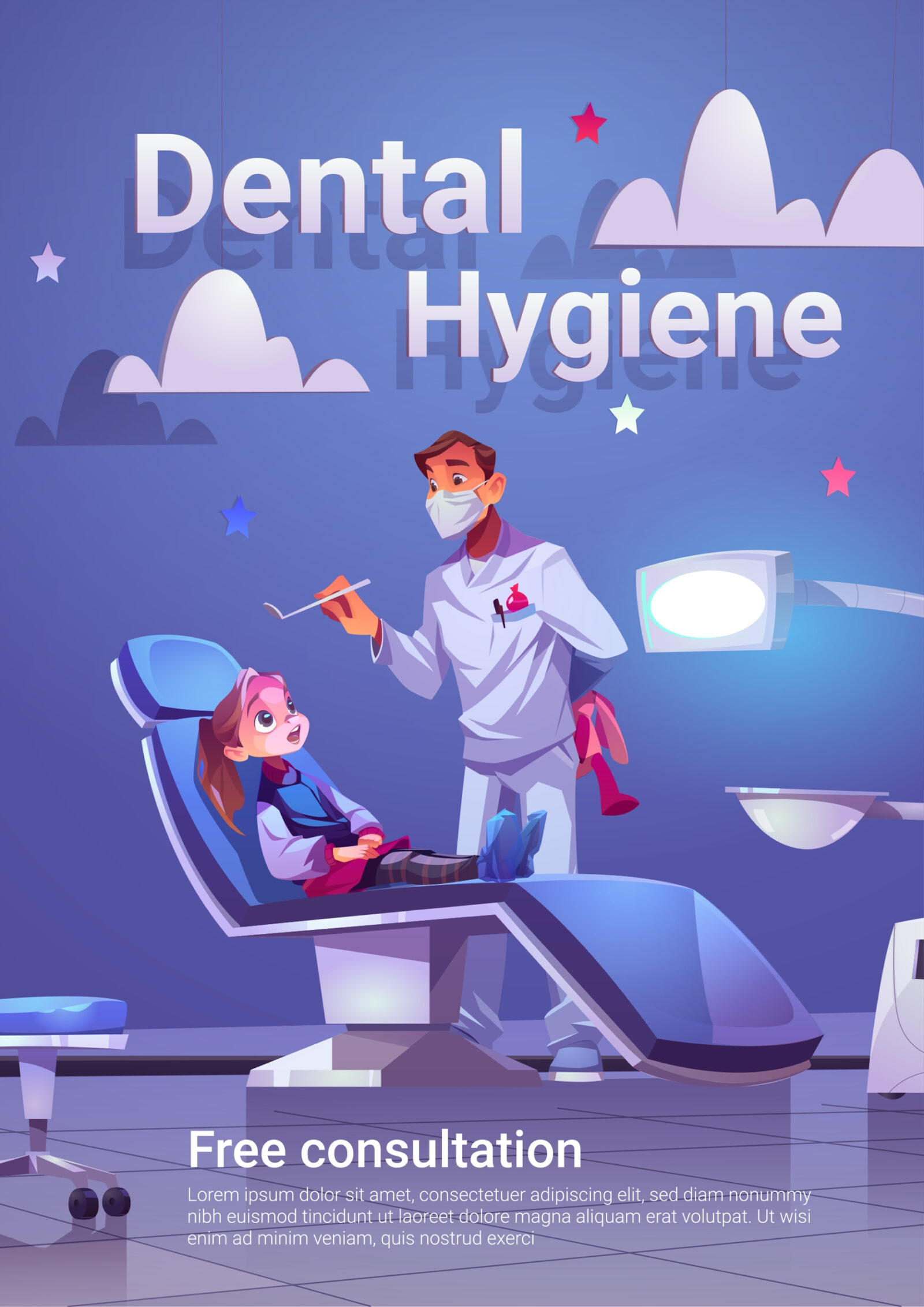
The most significant benefit of poster ads is that they’re relatively inexpensive compared to other types of advertising. They don’t require much time or effort from you, either. Print out some copies and post them! You’ll have more time to focus on running your practice instead of designing and printing ads every month.
Where should I show my poster ad?
You could place an ad at the front desk at your local grocery store or pharmacy. That way, people will see it during their weekly shopping trips! Another option is to place an ad at the entrance of your office building so people coming in for appointments can see it immediately upon entering the building.
You want your posters anywhere they are allowed for free or can place them at a low cost.
How to design a poster ad
A poster ad is a simple way of reaching your target audience. Start by choosing an image that best represents your brand and an eye-catching headline that will encourage people to stop and look at your ad. You can also include a call-to-action (CTA) phrase, encouraging people who see the poster to read it and take down your web address or contact info. Hire a professional or use template systems like Canva to design one yourself. Links are in the resources section below.
Banner Ads
Printed banners are a great way to get your message out there. They’re versatile, can be displayed in multiple places, and are easy to create.
The process
- Choose a catchy title that will grab people’s attention. Make sure it is clear what you want them to do after reading it (i.e., “call us for an appointment” or “visit our website”).
- Use eye-catching images that represent your brand in the best possible light. Remember to use text as well. The text should reinforce what the image says or add more detail about your doctors and the procedures you offer.
- Pick colors that match your brand identity and are attractive to potential patients. Remember that these colors will influence how people feel about your office, so you want something that makes people feel good, comfortable, and trusting!
- Be sure to use high-quality materials like thick fabric or canvas when printing out banners so they last longer and look nice.
- Remember to add a QR code that people can scan to visit your website later.

Locations for printed display advertisement
The first place that comes to mind is the train station.
Another place that is commonly used for advertising is outside of buses. Buses are great because they are mobile and can go anywhere in town, meaning they will reach a wider audience than just those who live near a station. Another reason they are so popular is that there are no limits on how many times they can be seen by potential patients daily. If someone misses it one day, another opportunity is always coming up soon!
If you want something more private than outdoor ads, consider placing an advertisement inside a bus or metro car instead! Gyms and other stores are also good options. These places are less crowded than other areas like parks or malls, so the banners stand out more.
Groupon
Groupon is a daily deal website that helps you save money by buying discounted goods and services. The website features deals on everything from dental treatments to beauty products.

Groupon has been around since 2008, but many people are yet to learn what it is and how it works. The process of getting started is pretty straightforward: You create an account, fill out a few basic details, and then you’re ready to start posting deals. Groupon offers a variety of options for your ads, including print and digital marketing.
Groupon advertises through email blasts, social media posts, and their website, reaching millions daily. This type of advertising is effective because it’s targeted and personalized for each user based on their interests and location. The users also have the option of sharing the offers.
The cost of using Groupon varies depending on the type of deal you choose. For example, if you offer a discounted cleaning service for $30 instead of the usual $50 fee, Groupon will charge you $10 per deal sold through their website. People can buy up to three coupons at once with one purchase. In this example, each patient will only pay $20 per appointment instead of $50. But this can be especially helpful if your practice needs more patients but doesn’t want to spend too much money upfront advertising.
One drawback is that some patients use Groupon just for the deal and don’t become long-term patients. Some dentists also complain about the quality of patients they get through Groupon. They believe Groupon patients are mostly bargain shoppers and don’t want to spend on anything else. But when you have no patients, even bargain hunters may be better than no patients.
Some alternatives to Groupon are:
- LivingSocial
- Capital One Shopping
- Coupons.com
The best feature of an advertisement on Groupon is that you don’t need a marketing budget. You pay for marketing out of the money you receive. If there are no sales, you don’t pay anything.
Direct Mail Marketing
Direct mail offers an attractive, tangible way to get patients, from postcards to brochures. Dentists can maximize their marketing efforts by utilizing well-crafted direct mail pieces and gain a competitive edge. With the right strategies and best practices in place, dentists can increase their return on investment, build relationships with their patients, and grow their practice.

Benefits of direct mail marketing for dentists
- Direct mail is a cost-effective strategy in most cases.
- Direct mail can also help you stand out from competitors.
- It’s easy to track and measure the results of your campaigns.
- It’s a great way to build relationships with your patients. When they receive a customized direct mail piece, you care about their needs and goals.
How to choose the right direct mail pieces
The type of direct mail piece will depend on your goals and the type of patients you’re trying to reach.
Postcards
Postcards are a cost-effective way to get your message out to people quickly. They are easy to design and can be printed in various sizes and shapes. You can send them as a single piece or in a set. Read a detailed article about dental postcard marketing.
Specialty pieces
Specialty pieces like greeting cards, calendars, and magnets can work for the right audience.
Brochures
Brochures are an excellent way to provide more detailed information about your practice and explain what you do. Brochures may be better if your target audience includes a wide range of age groups and different needs and wants. You have more room to address them separately.
Other
Some examples of other direct mail options are door hangers, new movers’ welcome packages, flyers, and inserts.

Crafting effective messaging for direct mail
It would be best to think of a few things when crafting messaging for direct mail.
The audience
The most important thing to remember is your audience. The design, the wording, and the overall message must be customized to your target demographics. Use relatable images. Make them feel welcome to your practice. Avoid creating a feeling of being out of place for prospective patients. For example, sending postcards with models with expensive smiles to a blue-collar community.
Sufficient introduction
You want to ensure that your patients know who you are and what you do. Make sure you constantly ask yourself what the patient wants to know. Often marketing pieces use generic images of doctors with no names or a personal touch.
Keep it simple
Make sure your message is brief and easy to understand. The less complicated your message is, the better.
Avoid generic messages
Instead of pursuing the tried and true, create something unique to your practice and business. But don’t try to be ‘too cute.’
Focus on benefits
Ensure patients understand how you can help them. Instead of focusing on the features of your products or services, focus on the benefits. Benefits are what customers care about, not what you do. For example, instead of saying you use Zirconia Porcelain crowns, concentrate on how your technology delivers the most natural and beautiful smile.
Be authentic
Authenticity is essential and will make a difference in your targets’ purchasing decisions. It’s more important to write a message that shows how down-to-earth you are instead of a typical ‘clever’ marketing message. You are not Nike, and ‘just do it’ didn’t make Nike successful. Their product did.
Strategies for targeting the right audience
1) Know your ideal patient
To reach the right audience, you’ll first need to know who you are trying to reach.
- Who are the people that you want walking through your doors?
- What do they look like?
- Where do they live?
- What do they do for a living?
2) Identify the most effective ways to reach your audience
Decide which methods work best to reach the now-identified target. Postcards, letters, or brochures?
3) Consider new ways to reach your audience
Be open to experimenting with new techniques and getting patients in new ways. Some examples are distributing your direct marketing piece during weekend kids’ games or church gatherings.

Tracking results and measuring ROI
Track everything. This includes the number of pieces mailed, the cost, and the results. Make sure you know where your mail is going and who is responding. Keep a record of different designs or types of pieces if there is more than one.
Direct mail marketing tips for dentists
Start early
Start planning early. It can take time to design and print your pieces, and it will take time to see results. So prepare.
Different Test pieces
Testing is essential to direct mail marketing. You want to know what works and what doesn’t work. Test different pieces to see what works best for your practice. But make sure the numbers you test with are large enough. You have to send thousands to judge the result correctly.
Be consistent
Consistency is essential after you decide on the best piece for you. This means mailing the same pieces on the same days each month repeatedly and following other mailing guidelines the same way.

Examples of successful direct mail campaigns
Weight Watchers
In the 1980s and ’90s, Weight Watchers conducted one of history’s most successful direct mail campaigns. The company sent millions of pieces to customers each month. The campaign was so successful that Weight Watchers reported $125 million in profits in 1989 alone.
Amazon Prime
Amazon is another company that has succeeded with direct mail. Even though Amazon is an eCommerce company, it sends millions of customers free trial offers for its Prime membership program every month. This program became one of Amazon’s most profitable programs.
H&R Block
H&R Block has also done well with direct mail campaigns. The company offers millions of people a free tax prep and filing assistance each year. H&R Block has been sending these offers through the mail since the 1950s.
The American Heart Association
The American Heart Association is another example of a successful direct mail marketing campaign. The American Heart Association sends millions of mailers annually promoting heart health and providing information about keeping your heart healthy.
These are indeed huge companies, but the point is that if done right, direct mail marketing still works.
The best direct mail marketing services
Mailing service
Using a mailing service makes it easy to start with direct mail. You can send your pieces to the mailing service, and they will do the rest.

Printing and design service
Although you can design your pieces, outsourcing the design may make more sense.
List broker
List brokers sell lists of people interested in your products or services.
Creative agency
Using creative agencies with your direct mail pieces can be an excellent idea. These agencies can help you to craft the right message for your campaign and take care of all the aspects of the campaign.
Use of databases in direct mail marketing
Customizing direct mail with databases is an excellent way to reach out to your patients. Using a database, you can customize postcards and letters with consumer information such as their name, address, and purchase history. This helps to make the postcards and letters more personal and welcoming. It also helps to ensure that your direct mail will be relevant to your patients.

For example, if you know that a person has previously paid for teeth whitening, you can include a coupon for the same service. You can also use the information in your database to target specific patients. For example, sending dental implant promotions to people over 60 may be much more cost-effective than a ‘blind’ mass mailing with a large set of promotions to everyone. You can increase engagement and generate more production by taking the time to customize direct mail with databases.
Direct mail marketing mistakes
Here are the most common mistakes dentists make.

1) Sending too many mailers
Advertising is a numbers game. You usually spend a large amount of money on direct mail campaigns. The trick to spending money wisely is to send out the correct number of mailers to the right people at the right times. Sending out too many mailers that are not targeted will add up quickly in terms of postage, paper, and labor costs.
2) Sending too few mailers
On the other hand, sending out only a few mailers means you need to reach more people and might be missing out on patients. A common mistake is the idea of ‘testing’ a campaign. For example, sending 500 mailers to see if direct mail ‘works’ has almost no value. As a scientist, you know research needs to reach a statistically significant number to be meaningful. So, for a direct mail campaign to give you correct results, sending a few thousand a few times is the minimum needed to provide accurate results.
3) Using stale content
It’s essential to update your direct mail campaigns regularly to keep up with current events and news and keep your message relevant and timely. If an advertisement’s message or design is stale or uninspired, it’ll likely be thrown out or ignored. On the other hand, if a piece of direct mail contains new, interesting information, it’s more likely to be read.
4) Lack of good visuals or use of irrelevant images
While the words in your direct mail marketing campaign are essential, so are the images you use. Poor visuals include pictures of ethnicities or age groups outside your target audience. Another common mistake is the use of poor-quality stock images. Adding visuals such as good photos, diagrams, or graphs to your advertisements can help you better deliver your message and capture the attention of potential patients.
5) Failing to track results
It can be challenging to track the results of direct mail campaigns, but it is crucial for adjusting your strategy in the future. A couple of options are to include a reply identifier in each mailing, such as a promo code or a phone number that allows recipients to return the call to a specific number you can track.
Another excellent method of tracking responses to a direct mail campaign is using QR codes. QR codes quickly become one of the most popular ways to incorporate visual elements into direct mail marketing campaigns. A QR code is a type of barcode that can be scanned with a smartphone using a QR code reader app. Once scanned, the QR code will direct the reader to a web page or online ad that you can easily track. Scanning a QR code with a smartphone provides a more interactive experience for the reader and is more likely to get them interested in what your dental practice has to offer. It also helps with maintaining your information with the patients since many throw junk mail out quickly.
Word-of-Mouth Marketing
It is a form of marketing that relies on recommendations from satisfied patients, their families, and friends to spread the word about a dentist. Word-of-mouth marketing is a strategy that encourages customers to spread positive feedback about a business through their personal networks. It’s a naturally occurring, low-cost channel that is easy to tap. You don’t have to pay anyone to do it.

Word-of-mouth marketing can be incredibly effective. The key is creating a positive patient experience they are eager to share with others.
Learn building reputation for your dental website.
Benefits of word-of-mouth marketing
- There is no direct cost involved.
- It is the most effective way of reaching new patients.
- Its effect is long-term.
- It can be scaled easily.

The importance of creating a positive patient experience
Successful dental practices encourage patients to talk about their experience through the quality of service provided. To create a positive patient experience, dentists can start by implementing the following strategies:
Understand what customers usually communicate during referrals.
Customers will want to speak to others about the quality of your service. They want to express how friendly and approachable the staff members are and how easy the services are to understand. At the end of the day, they want credit for introducing a great dentist to their friends. So they only do it if they are confident about their friend’s experience.
Design the experience to fit customers’ expectations
To fit customers’ expectations, dentists must design a positive experience by providing consistency at every touch point. A treatment process that is easy to understand, convenient, and accessible. It is essential to maintain this experience across all channels.
Here are a few examples of low-cost efforts that help create a positive experience for patients:
- Acknowledge patients when they walk into the office. No matter how busy you are, or even if you are on the phone, one node and a smile are all you need to stand out. These days a lot of healthcare practices lack basic customer service skills. That makes it easy to impress people!
- Make water bottles and coffee available in the waiting area.
- Offer patients a ‘comfort menu’ when they sit on the treatment chair. The menu can include a blanket, an mp3 player, water, and a pillow.
- Show empathy. When someone says my tooth hurts, the first question should not be about their insurance. Just a simple short sentence before that question can make all the difference. For example: “I am sorry to hear that. Let’s see how we can help you. Do you have your insurance card with you”.

Developing a successful referral program
To successfully develop a referral program, dental practices must identify their target patients, understand their needs and pain points, and provide benefits that the patients are willing to exchange for the referral. You can then leverage these points in your marketing efforts to create a successful referral program.
The following strategies can help you develop a successful referral program.
Identify your target customers.
The first step in developing a successful referral program is identifying your target patients. This means determining the types of customers who will benefit most from your services. You can do this by conducting a SWOT analysis identifying your Strengths, Weaknesses, Opportunities, and Threats.
Understand their needs and pain points
Next, you must understand your target patients’ needs and pain points. This can help you create a referral program that solves their problems and provides benefits they will exchange for a word-of-mouth referral. Maybe they need to find a way to afford whitening trays. Or, they would love to get free Flouride for their children.
Create benefits they are willing to trade for referrals
The last but most crucial step in developing a successful referral program is creating benefits your customers are willing to exchange for referrals. You can produce benefits through discounts or freebies readily convertible to cash. The most effective referral programs solve customer problems and provide a tangible benefit. Some examples are free teeth whitening, gifts, or discounts. Some states may not allow the direct exchange of gifts for referrals. Still, you can create a loyalty program that benefits your most loyal patients without a direct exchange.
Creating content to encourage word-of-mouth marketing
Creating compelling content that inspires patients to talk about their experience is the best way dentists engage patients and encourage word-of-mouth marketing. The type of content you create depends on your audience and their needs and pain points. The following are effective types of content.
- Oral Health
- Procedure guides
- Treatment options
- Preventive care
- Insurance benefits
Community Outreach
Connecting with local organizations and involvement with events can create positive relationships with your community and increase awareness of your practice. To start, consider sponsoring a current event. You can even host something like a dental health fair or an educational talk.

You can also partner with local charities or organizations to get involved with their causes. This will demonstrate your practice’s commitment to positively impacting the community.
Events
Events can take many forms, from small gatherings to large-scale conferences. Use different national holidays or occasions to plan events. Easter, Christmas, and Halloween are some examples. However, no matter the type of event, there are a few essential tips to keep in mind to ensure it is a success.

First, tailor the event to your audience. If you target potential new patients, focus on dental health and preventive care topics. If you target existing patients, create an event that builds relationships and allows you to interact and get to know them better. For example, you can organize Easter events with gifts for the kids.
Second, carefully plan the event’s logistics, including the date and time, venue, and any catering or entertainment needed. You don’t want your efforts to hurt your practice because it is poorly planned.
Third, promote the event through different channels, like social media and word-of-mouth.
Fourth, prepare gifts, educational material, and marketing pieces packed and ready in a gift bag.
And finally, be sure to follow up with attendees after the event to thank them for coming and encourage them to keep in touch.
Local Sponsorships
One of the best ways to do this is to sponsor local sports teams or leagues. This is especially true if you’re located near a university or school. You can sponsor their sports teams or provide special discounts to students and faculty.

You can also sponsor local churches or community events. This kind of sponsorship can strengthen relationships and build trust with the people in your area.
Volunteering
Volunteering shows that you care about your local community and allows you to demonstrate your skills and commitment to providing quality care.

Consider partnering with a local charity or community organization for free dental services or screenings. This helps those in need and allows you to engage with potential new patients. You can also volunteer your time at local health fairs or events to raise awareness about dental health.
Free Service
Offering free services as part of your dental practice’s marketing can help you build a solid patient base. By giving your patients complimentary services, you can show them how much you value their business.

Additionally, offering free services can help you attract new patients. Potential patients are more likely to be interested in a dental practice that offers something extra than one that doesn’t. And this can be especially true if you offer something valuable, such as a complimentary smile makeover consultation or teeth whitening session.
Another unique advantage of this type of marketing is that no cash investment is needed. You are investing your time, but it is much better than paying cash, assuming you don’t have patients and are free.
You can offer the free service through charity donations or as a gift certificate. You can give it to local businesses and ask them to hand it to people they feel are good customers. Free service offers are a risk-free way of marketing.
In-Person Marketing
Visiting local businesses and talking to their employees can be a great way to get your name out there and build relationships with potential patients. You can arrange a visit and take a basket with bagels and coffee to a small business near you.

Additionally, giving talks at career day events at schools or career fairs can be a great way to introduce yourself to likely patients.
Miscellaneous In-Person Marketing Ideas
- Free toothbrush for kindergartens.
- Donate services to silent auctions.
- Join book clubs and attend book readings.
- Give away free work certificates to other businesses.
- Buy snacks for business neighbors.
- Barter services for marketing products. For example, cleaning for marketing advice. Teeth whitening for website content.
- Dental club with a free membership that gives away a toothbrush every six months. They would need to stop by to pick it up.
- Organize drawings for national holidays like Christmas.
- Join local businesses to organize more significant events with better gifts, giveaways, and entertainment.
- Share the cost of hiring an in-person marketer with other doctors visiting businesses and promoting all your practices.
Digital Marketing
Website Design
As a dentist, you know that online presence is essential to growing your practice. You need a website that demonstrates your expertise and presents potential patients with a great first impression. But how can you design a dental website that stands out from the competition and attracts new patients?
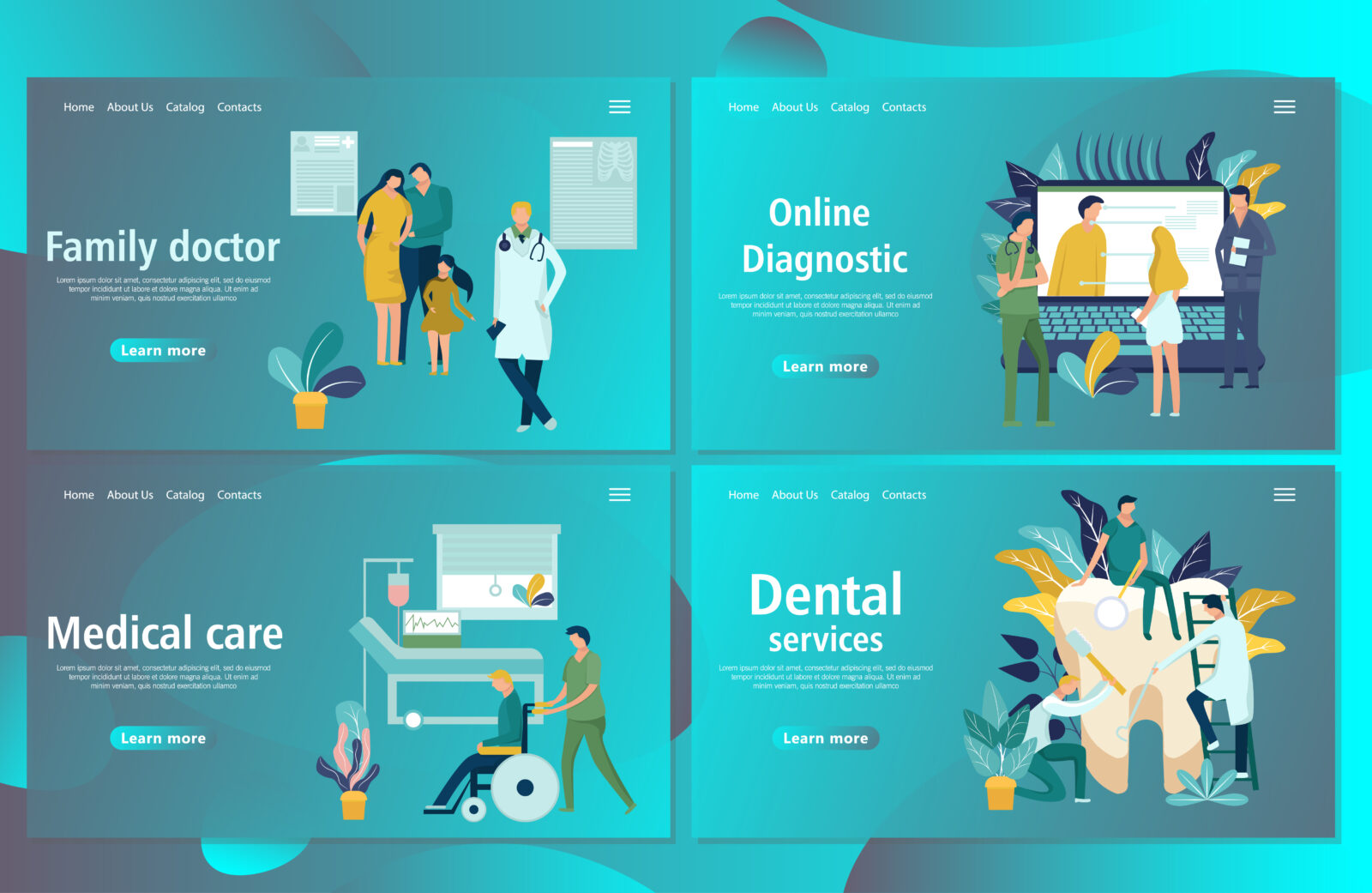
1) The First Impression
There is no need to explain why the first impression is important. So, let’s jump into how a website can help you present your patients with an impressive one.
- Find a domain name that is:
- Memorable
- Easy to spell
- Not too similar to other domains
- With a low chance of confusion with plural/singular versions
- Not more than three words
- Develop a website with an attractive design
- Design a website that Stands out
- Pay attention to details
- Build an easy-to-use navigation menu
- Display and match branding
- Highlight expertise and authority
- Showcase technology
You want the design to be of the highest quality, reflecting the level of care and expertise you provide. Your domain name should be simple yet unique — something that stands out and reflects your brand or services. But don’t overthink it. Just make sure it meets the five criteria above.
Custom Dental Website Development.

The details, like the font size, images, and video, are also important. Potential patients will look elsewhere if your website is not visually appealing and easy to navigate. A good website should also have clear calls to action so visitors know what to do next.
Remember, most prospective patients don’t know you. All they have to judge you based on is your website. So, they will do just that. Your website is your representative. Make it a worthy agent. See some tremendous dental websites here.
2) Design Quality
Your website design should have the following:
- Modern and up-to-date layout
- High-quality images
- Relevant Multimedia
- Smooth navigation
- Great good on all devices
- Timeless features

Ensuring the design is up-to-date, modern, and attractive is essential. Good design should draw people in and make them want to explore your site. It should also be easy to navigate and intuitive to use. Quality images and multimedia can also help create a terrific user experience. People are more likely to stay on your site if it looks good and has interesting content.
Additionally, ensuring your website is compatible with different devices and browsers is necessary. As more and more people browse the web on their phones, it’s essential to have a mobile version of your site that is unique and optimized for these devices. A website that looks great, is easy to use, and is compatible with different browsers and devices will help you reach more people and attract more patients.
3) Compatibility & Compliance
Your website should be:
- Compatible with all devices
- Adapt to all screen sizes
- OK, on all browsers
- Accessible
- HIPAA Compliant
- Secure and safe
- Legally covered (disclaimers and privacy notices)
- Following local laws and regulations
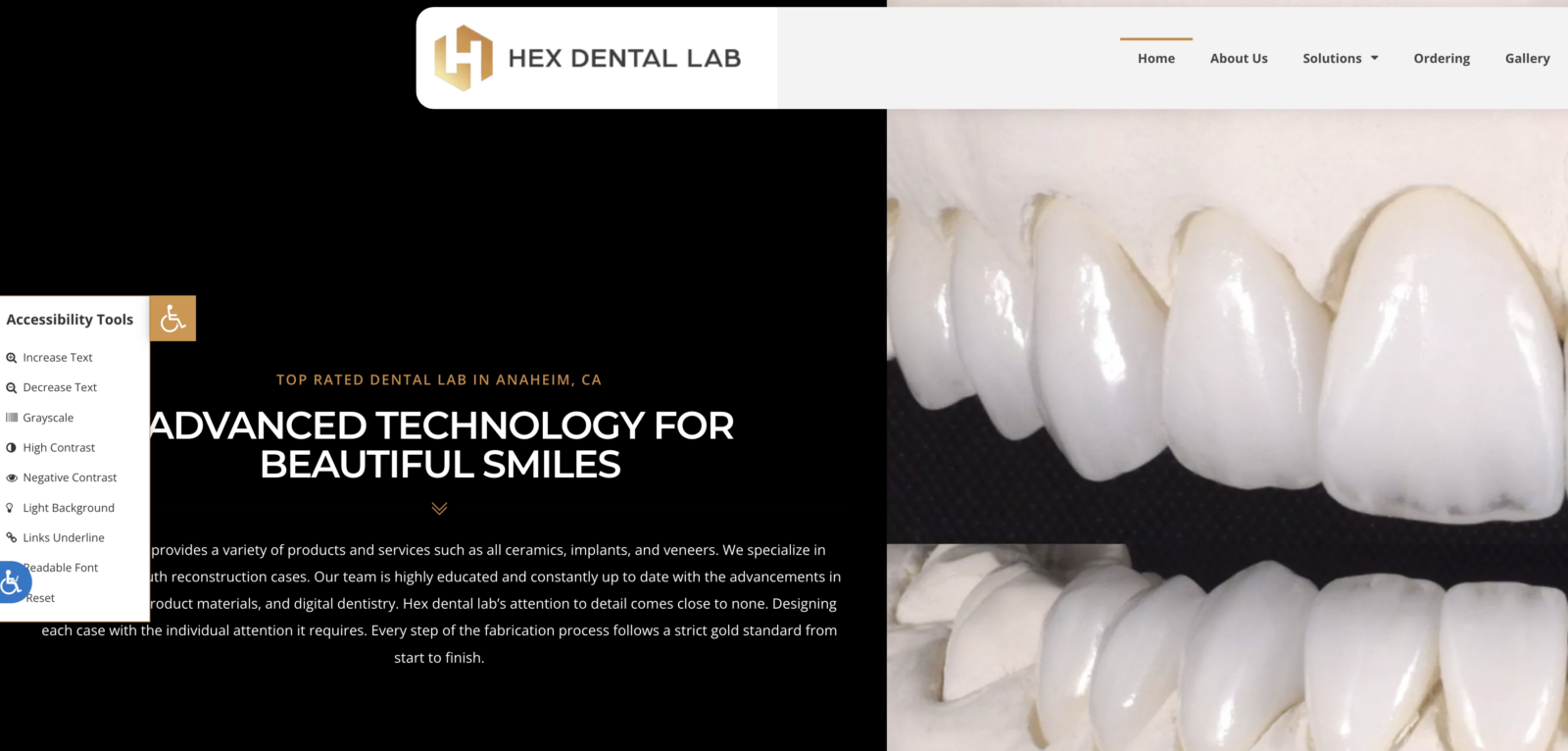
Achieving compliance and compatibility is a complex process that involves every aspect of website design and development, from coding to content.
Another goal is ensuring your website is accessible to all, regardless of their device, browser, or disability. You must confirm that your website complies with regulations like HIPAA, ADA, and local laws and display the correct disclaimers and privacy notices.
4) Optimization
Your website needs to be optimized for the following:
- Search
- Speed
- Easy navigation
- Conversion
- Mobile devices

Search optimization ensures your website is visible and easily found in search engine results. Speed optimization guarantees your website loads quickly and without errors. Navigation optimization ensures that users can easily find their way around your site. And conversion optimization is about improving the user experience to increase patient contact, appointment requests, or other desired outcomes. When all these requirements are met, you can be sure your website is optimized and ready to reach its maximum potential.
5) Tools and Features
Here are some basic features every modern website should offer:
- Contact forms
- Appointment scheduler
- Registration forms download
- Insurance information
- Interactive map
- Educational videos
- Patient Portal
- Payment capability

From online forms to appointment scheduling, countless tools and features can make your website even more effective. Contact forms are a great way to engage visitors, as they can quickly contact you.
Appointment schedulers make it easy for patients to book appointments online, and registration forms ensure secure data collection and offer time savings. You can also add insurance information to your website and an interactive map that makes finding your office more accessible.
Educational videos are great for providing customer service and can help with procedure demonstrations. Videos also help with case presentations and answer questions. With a patient portal, you can easily keep track of all your patient information. Finally, adding payment capabilities allows patients to pay quickly and securely. With the right website tools, you’ll be able to provide patients with a better overall experience.
6) Content
Add content to your website that includes:
- Benefits & Features
- Useful information
- Bios for everyone
- Preventive care
- Educational material
- Procedures explanation
- Admin information
- Multimedia
- Before and after images
- FAQ

If you’re setting up a website for your dental practice, it’s essential to ensure you include all the necessary content. The content includes articles highlighting your services’ benefits and features and helpful information about oral health, from preventive measures or procedures to other details.
You’ll also need bios for everyone on your team and multimedia content, including before and after photos, to showcase your work. And remember to include an FAQ section to answer any questions your potential patients may have. By including this content, you can give your website visitors all the information they need to make an informed decision about your services.
7) Conversion
The best way of ensuring good conversion on your website is to pay attention to the following:
- Funnels planing
- Call-to-action
- Visible contact info
- Clear next step
- Examples of work
- Promotions
Creating a website for conversion can seem daunting, but it doesn’t have to be. Following a few simple tips, you can create a website that helps bring in new patients and turn them into loyal fans.
First and foremost, you need to create an effective conversion funnel. This means setting up a series of pages to direct visitors to contact your office. Each page should have a clear call-to-action and visible contact info, so visitors can quickly get in touch. You should also ensure a clear next step for visitors on each page.
Finally, make sure that you show examples of your work on your website. This will help to reassure visitors that you can deliver results. By following these tips, you can create a website that will help to increase your conversion rate and turn visitors into patients of record.
In the following sections, we go into more detail about optimizing your website for search and explain how you can market your website online.
Digital Marketing
Search Engine Optimization (SEO)
The benefit of optimizing your website for search is repeated everywhere on the internet. So we will skip convincing you that SEO is beneficial and focus on showing you how to optimize your site.
Optimization steps can be divided into two. On-site and Off-site.
On-Site Optimization
Optimizing the site itself includes technical optimization and content creation.
- Technical
- Code
- Speed
- Navigation
- Layout
- Meta tags
- Image alt tags
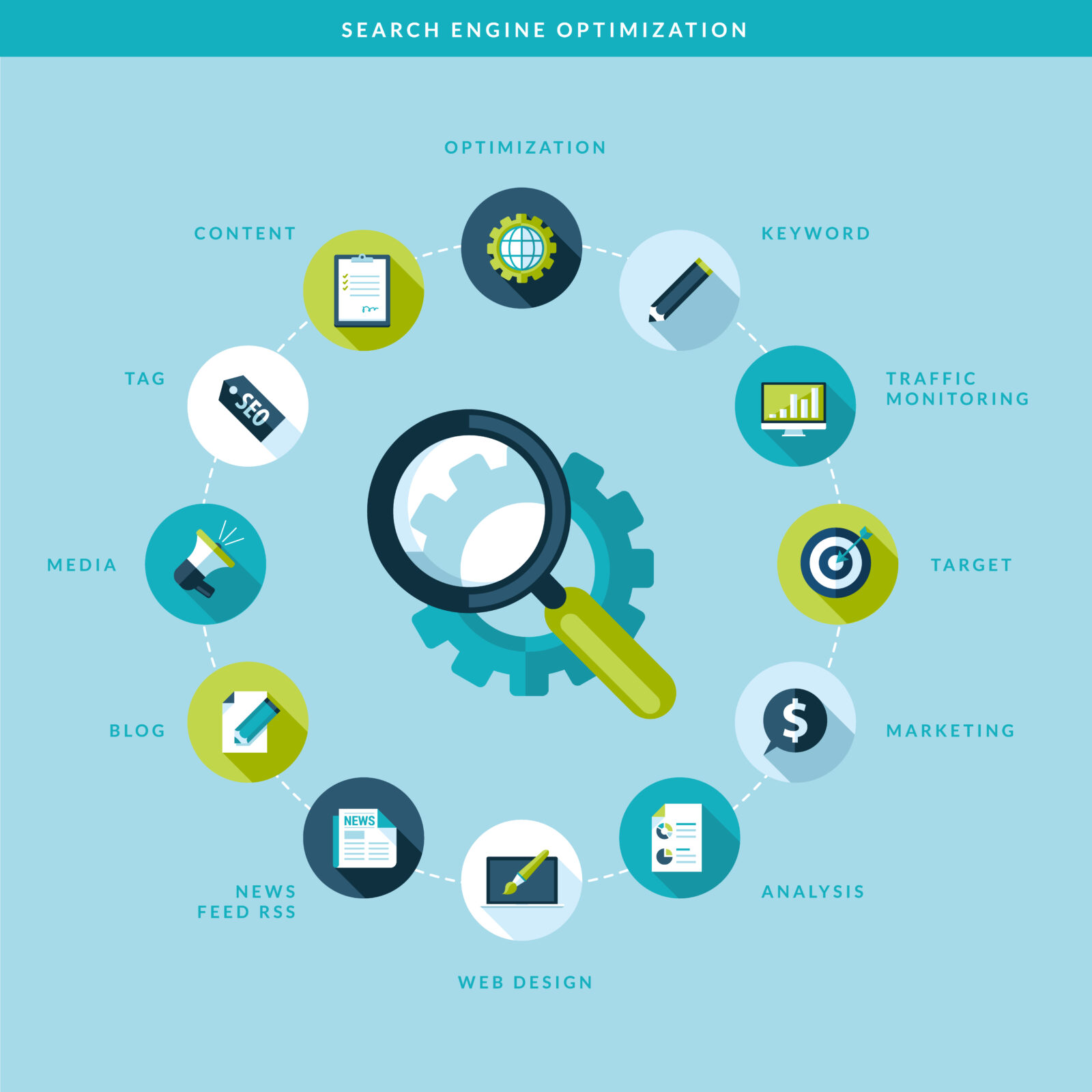
Technical SEO means ensuring your code is optimized, your tags are up to date, and your website runs at top speed.
First, you’ll want to optimize your code. This means making sure it’s well-structured and error-free, which will help search engines understand your website better.
You’ll also want to check your meta tags to ensure they accurately reflect your site’s content.
Finally, you need to make sure your website is running at optimal speed. The faster your website loads, the higher it will rank in search engine results.
- Content
- Useful text
- Answer questions
- Relevant
- Interlinking
- Relevant images
- Relevant media
- Tables and charts
- Engaging format
If you’re a dentist looking to improve your website’s SEO, you must focus on creating good content. But what makes content?
Well, first and foremost, it needs to be helpful. That means providing your readers with articles, media, charts, tables, and other materials to help them learn something new. It should also be up-to-date and relevant to the dental industry.
Secondly, your content needs to be optimized. That means using targeted keywords and including targeted phrases, links, and other elements to help your site rank higher in search engine results.
Finally, make sure your content is easy to read and navigate. Use simple language, avoid jargon, and break up the text with headlines, bullet points, and images. By following these steps, you can create content that will be both useful to your audience and optimized for SEO.
Off-Site Optimization
- Link Buildup
- Organic link buildup
- Good content
- Unique images
- Interesting media
- Guest posts
- Link exchange with local businesses
- Organic link buildup

Organic link building in SEO is one of the best ways to increase your website’s visibility and ranking on search engine platforms. It helps to create relationships with other websites and online sources, increasing the number of inbound links to your website.
These links can help to boost your website’s search engine rankings, giving you more visibility and increasing your chance of success. The best way to do organic link-building in SEO is to create high-quality content that other websites are likely to link to. You can write blog posts, create videos, and craft engaging social media campaigns.
You’ll also want to ensure you’re actively promoting your content and getting it out there. By reaching out to other websites and influencers, you can increase the chances of getting your content shared and linked.
Finally, you’ll want to keep track of your progress and measure the success of your link-building efforts. With the right strategy and tactics, you can build a solid and sustainable link-building system to help your website reach the top of the search engine rankings.
- Paid Links
- Classified ads
- Guest posts
- Press releases
- Article links
- Business Directories
SEO professionals use paid links, guest posts, and directory links. These paid links can help boost your website’s rankings. But you should be aware of some potential downsides to these links.
Some companies will try to charge you excessively for a link or even sell you a link that won’t help your SEO. That’s one.
Guest posts can also be a great way to get more eyeballs on your website. But you must ensure that the posts are relevant to the topic and are of good quality. If you’re not careful, you could end up with several low-quality posts on websites with irrelevant content that could be actually harmful to your ranking.
Finally, there are directory links. These can be a great way to get more traffic to your website; the directory you’re submitting to has to be relevant and of good quality.
- Social mentions
- Others
Social Marketing for Dentists.
A social mention is any instance when someone mentions your dental practice or business on a social media platform. It could be a retweet, a comment on a post, or a link to your website. These mentions help to increase your visibility and reach potential patients. They also help build trust and reputation, showing that people talk about and engage with your dental practice.
Lastly, they can help to increase your search engine ranking. When social mentions include links to your website, Google and other search engines take note.
Tracking SEO Results

Tools like Google Analytics are the best way to track your website. GA helps you track and analyze your performance across multiple channels, including organic search, social media, and more.
Google Analytics can be very confusing. There are thousands of data points, and even for experienced marketers, it can be an overwhelming tool. The best way of taking advantage without getting buried in numbers is to simplify what you track. In most cases, tracking these few numbers is enough to help you evaluate the success of your campaign.
- Total Visitors
- New visitors
- US visitors
- CTR (click-through rate)
- Leads (calls or appointments)
- Landing pages
- Total number of keywords ranked
- The average ranking for the whole site
Remember that you need to give time for your changes to take effect. For example, if you add a new article, you may need to wait a few weeks before judging the final outcome.
Also, changes may have effects beyond their immediate page. For example, you may add content regarding root canal treatments but get a bump on a page regarding tooth decay. So, when you look at the results, keep that in mind. The indirect effect of new content, interlinking, and other changes to the whole site and other pages is worth tracking.
The most common SEO mistakes

1) Using too many keywords
While it’s necessary to include relevant keywords in your content and meta tags, overusing them can negatively affect your ranking. Naturally, use related keywords. Use words the way you would use them in a real conversation. Don’t think of search engines. Think of people.
2) Poor keyword research
Instead of guesswork, use toots like Mangool to find relevant keywords. The link below in the resources area.
3) Failing to write quality content
Content should be well-written, informative, and engaging. If your content is not worth reading, it won’t rank.
4) Overthinking and complicating the process
Some SEO specialists oversell the value of on-site SEO and the technical work needed for optimization. Keep in mind there is nothing magical about SEO. Use common sense. You are good to go as long as people actually read your content.
5) Trying to ‘trick’ Google
Avoid following shady suggestions or temptation to shortcut to the result. In most cases, Google finds out quickly and may penalize you severely. Just stick to the basics.
6) Falling behind
Keep up with SEO trends. What worked a year ago might not work today, so ensure you’re always updated on the latest SEO news. By avoiding these mistakes, you can maximize your SEO efforts and ensure that your website gets the highest possible ranking.
7) Use of AI for content production
New amazing AI tools write a whole article for you in seconds. Therefore, some SEO professionals have been overusing them to excess. Google has commented that AI-produced content, especially those that are just copied and pasted without review, won’t be ranked well.
In our Dental SEO series, we will detail the optimization techniques.
SEO VS. PPC
| SEO | PPC |
|---|---|
| Organic, free traffic | Paid traffic |
| Long-term strategy | Short-term strategy |
| Higher credibility | Immediate visibility |
| Requires time and effort to see results | Immediate results possible |
| Lower cost per click | Higher cost per click |
| Targeted to specific keywords | Targeted to specific keywords and demographics |
| Can be impacted by algorithm changes | Not impacted by algorithm changes |
| Offers lasting benefits | Offers benefits only as long as you keep paying |
Local and Directory Listing
Which directories should I choose?
If you’re looking to list your dental office on local directories, there are a few key places you should focus on.
- Maps
- Local Directories
- Industry directories
- Social media
- Community guides
- Insurance lists
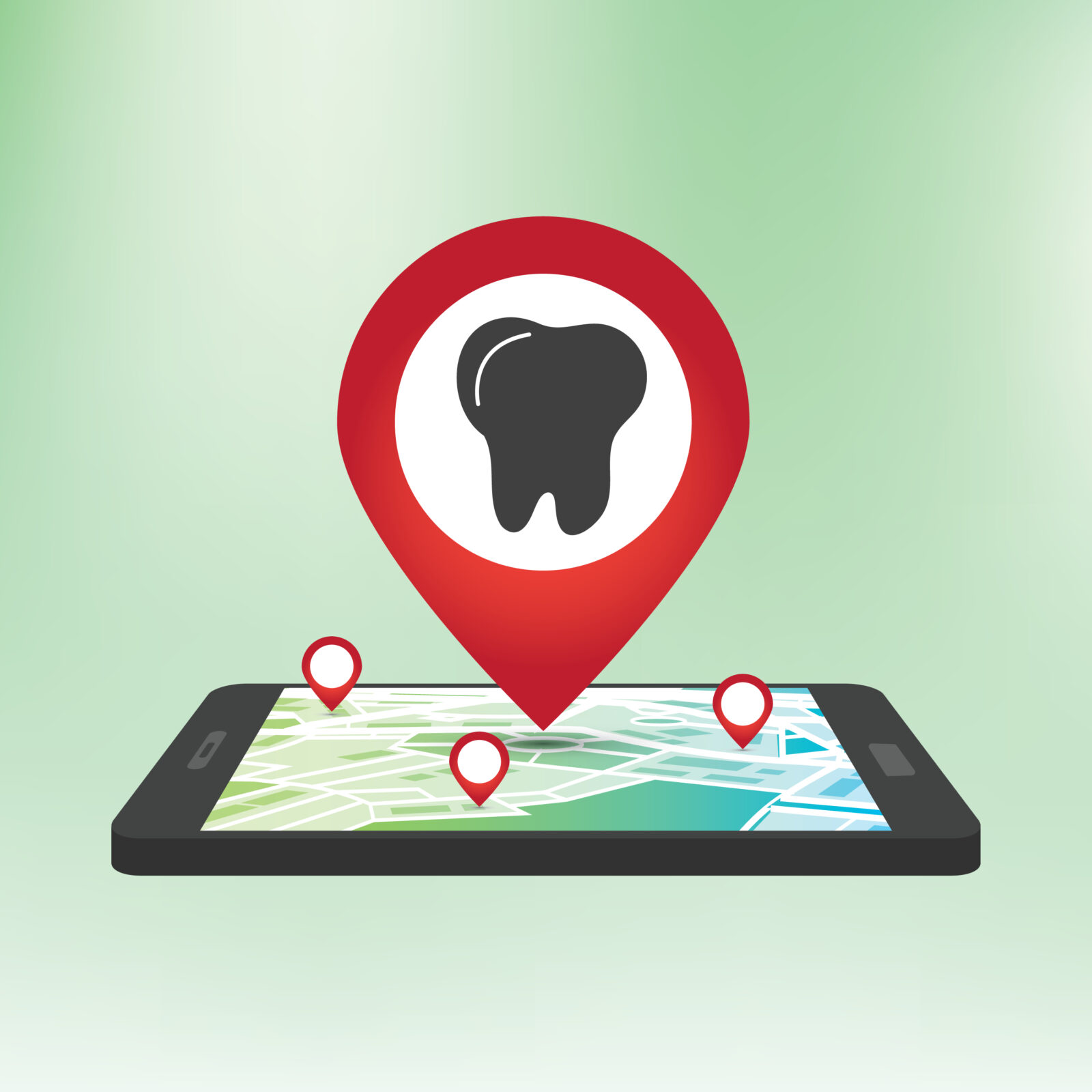
First and foremost, you’ll want to list your office on Google Maps and other primary mapping services, like Apple Maps, Bing Places, Wayz, and Mapquest. Make sure your address is accurately listed on all the primary services. Also, use the exact same format for names and other information in all listings.
It would also help to list your office in popular local directories like Yelp, ZocDoc, Healthgrades, Dental Country, WebMD, and Yellow Pages. This will help more people find your business and allow patients to leave reviews.
Another great resource is the American Dental Association (ADA) website. If you are a member of other associations, add your practice to those as well. Examples are specialty associations, the American Academy of General Dentists (AAGD), and State and County societies. Not only will this help the local community find your office, but it will also give you access to industry resources and education besides indirect SEO benefits.
Lastly, it would be best to consider listing your office in social media directories like Facebook and Pinterest. These listings will help you reach a broader audience and connect with potential patients more personally.
Some of these directories have no visitors, so what is the point of spending the time to do this? One of the factors Google uses to rank your map listing is looking at ‘citations.’ Citations mean other listings. Their logic is that if a business is legit with years of experience, it is undoubtedly posted in more than one listing. If Google looks for ‘citations’ of your practice and can’t find any, it is unlikely that it will rank you on top of the map results ahead of someone who may have 200 citations.
How to optimize a listing?
The first step is to claim the listing. The process may differ but usually includes a straightforward set of steps. When you have access to the listing backend, make sure the following are done:
- Review the accuracy of the data
- Make sure all information is the same across directories and maps
- Add new, high-quality photos of your practice
- Add descriptions and bios
- Add promotions, announcements, and posts
- Solicit reviews from happy patients
- Add posts and keep the info up-to-date
How to Get Reviews?
Reviews enable a practice to gain visibility and attract new patients while providing helpful feedback.

The decision to select a dentist is no longer a single-point decision. That means people do not pick a dentist by looking at one source. No one chooses a doctor by only looking at their insurance list or listening to friends. The process goes through multiple steps. You may initially hear about a dentist from a friend. Then you go online and search for them and look at their website. Later you may search for their reviews to see how others feel about the practice. And last, you may double-check to ensure they are part of your insurance network. You can lose a patient in any of these steps. That is why it is important to maintain a strong reputation by proactively working on your reviews.
How to get reviews from patients?
There are several ways of getting patient reviews, including
- Asking In-person
- Providing feedback forms
- Using online review platforms
The best way to get reviews depends on what a dental practice is most comfortable with and how much time and effort it can devote to obtaining them.
1) In-Person
Asking patients to leave a review in person is an easy way to get reviews. Dentists and staff can ask patients if they can leave a review after a visit, which is usually all it takes to get one.
2) Providing Feedback Forms
Providing patient feedback forms after a visit is another way to get reviews. Patients can be asked to provide honest feedback about their experience and be given the option to leave a review. This method is often more accurate than in-person requests and allows patients to explain their feedback in greater detail. But it can be risky if you encourage an unhappy patient to leave a review.
3) Using Online Review Platforms
Online review platforms, such as patient reviews and feedback websites, are convenient for getting patient reviews and detailed feedback. These platforms allow patients to leave reviews about their experience and give dental practices a way to respond to feedback. Online review platforms can also be more accurate than other methods, as patients can log in and leave feedback whenever they want. Business Review Central is an example of an advanced reputation management program. This tool from O360 allows practices to see a draft of the review and gives them a window of time before the review is published to resolve the issue with a potentially unhappy patient.

No matter your technique, making it easy for patients to leave a review is crucial. Some offices hand a mobile device to the patient right in the office, and while they are checking out, ask them to write a quick review and leave a good rating.
Google has a tool that creates a link that takes patients directly to the window at which they would leave the review. This is very helpful, especially when getting reviews from less tech-savvy patients. Here is the link to Google Review Link Builder.
How to deal with negative reviews?
Instead of ignoring bad reviews, do one of the following:
1) Reach Out
Try to contact the affected patient as soon as possible. It takes work, but it is necessary. A bad review can cost you thousands of dollars in lost revenue. Besides, you want to learn why someone got upset enough to write the review in the first place. We all deal with ‘crazy’ patients occasionally, but even in those cases, there is always a trigger, and it is vital to learn what that is and work on removing it. Make sure to apologize for the negative experience and offer any solutions that may help. If the review is particularly harsh, consider offering the patient a discount or other incentive to help compensate for their bad experience. There may be better approaches than arguments over who is right. Try not to get emotional and look at the big picture. Even if it is unfair, it may be worth it to apologize if you can eliminate the negative review at the end.
2) Respond
Always respond to negative reviews. This shows you are open to feedback and willing to work towards a resolution. It is also essential to be respectful and courteous in your response, as this will help to de-escalate the situation. Don’t get into details. Don’t try to use the reader as a judge. Don’t attack personally. Ask the patient to contact you, apologize, and announce the issue is addressed and won’t happen again.
3) Use the feedback
Taking feedback seriously and using it to improve your service is also key. Even when someone unfairly judges your practice, lessons can be learned.
4) Try to remove it
Some directories allow you to appeal to them to remove an inaccurate review. For example, if one person is writing more than one review, that is against most directories’ policy, and if it can be shown, they will remove that review. You do need a legitimate reason, though. Just arguing the facts or whether it is fair won’t help much.
4) Fight it
Sometimes the review is just inaccurate and very harmful. If the patient is lying, you can use the defamation laws to your advantage. Many attorneys will write a low-cost letter for you that threatens the person who is not stating the truth with a defamation lawsuit. These letters are very effective. This should be used as the last resort and only in extreme cases. Many upset patients get emotional and exaggerate the facts, which results in sharing inaccurate information. That is a technicality you can use to your advantage with the help of an attorney.
Reputation Management for Dentists.
Overall, in most cases, dentists can help restore damaged relationships and turn bad reviews into positive ones by responding to bad reviews promptly and professionally. People are more thoughtful about reviews these days and can spot a ‘crazy’ reviewer easily and ignore the feedback as well, which is great.
Digital Marketing
Social Media Marketing
The fact is that vendors and consultants have exaggerated the effect of social media marketing to some degree. Social media marketing is sometimes not an appropriate platform to market some practices. For example, you cannot do much to make Endodontics exciting on social media. But social media is still alive and an excellent method of marketing many dental practices.
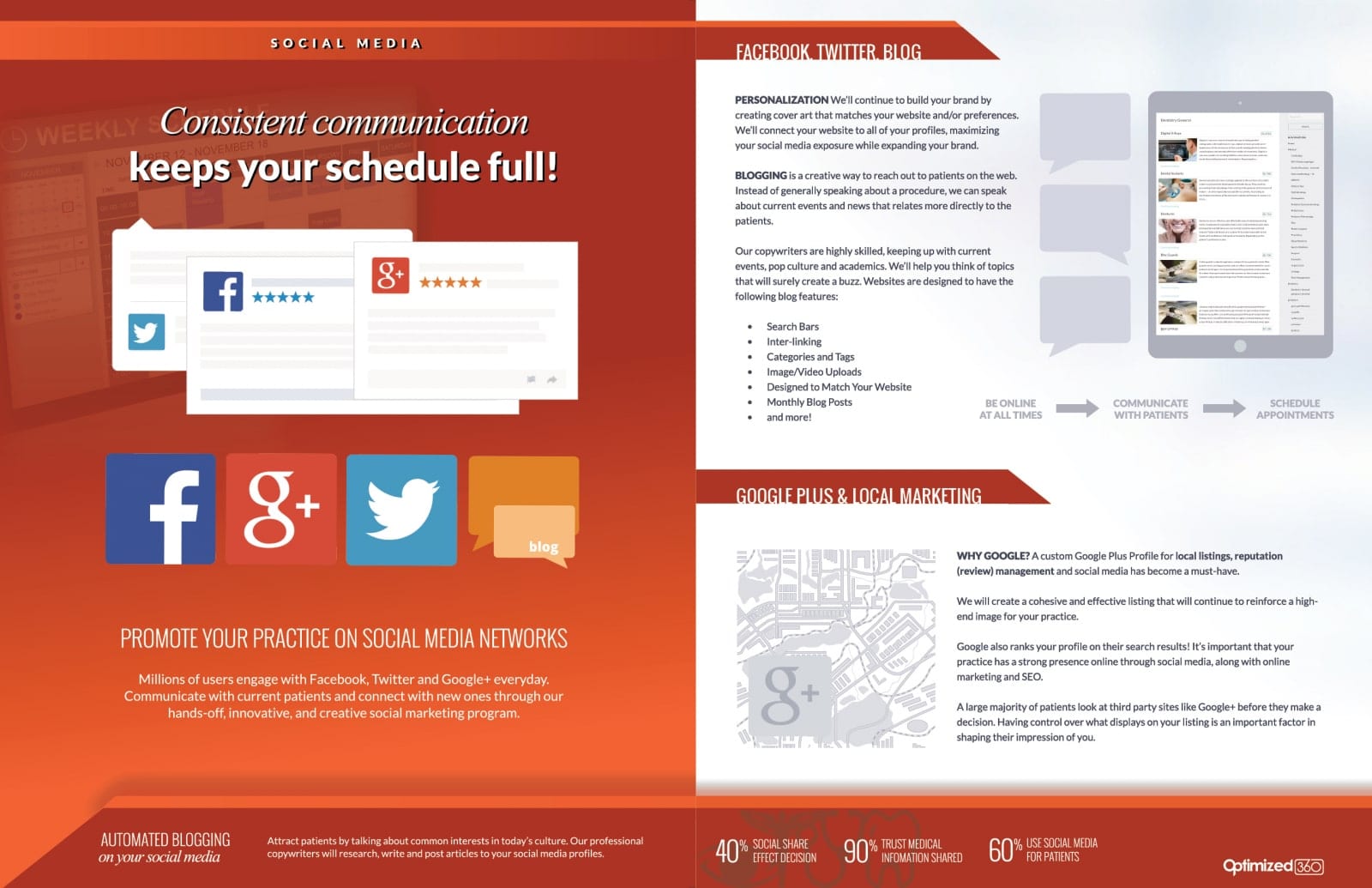
The most crucial factor that helps you distinguish between effective social marketing and waste of time is to understand this point:
There is a difference between marketing on social media and socializing on social media.
As a dentist, you should have an active presence on social media to reach a larger audience and establish connections with prospective and current patients. You can also reach more people using paid and organic marketing on various platforms such as Facebook, Twitter, Snapchat, Pinterest, and YouTube.
Organic marketing on Social Media
Organic social media marketing is a form of social media marketing without direct payment for posts or ads. To ensure your target audience sees your posts, you should frequently publish them on various social media platforms. Ensuring that your organic posts are consistent with your brand’s values is critical. In addition, you should include valuable, relevant, and helpful content in your posts, such as articles, tips, and advice. Avoid spam or clickbait and overusing the same dental topics.
Paid Ads on Social Media
Utilizing paid social media advertising effectively extends your reach and communicates with a bigger audience. This kind of advertising is usually suitable for general dentistry and should be executed after you have created your natural social media posts.

When writing paid social media ads, keep your message concise and clear. Your ad should be 15-30 characters per line and include an incentive for viewers to take a particular step, such as visiting your website or scheduling an appointment. Additionally, use photos of yourself and the office.
There are two types of ads you can run, especially on Facebook.
Direct ads. These ads highlight your services and take people directly to your website.
Indirect ads. These are advertisements that promote existing content that you have posted. Usually, such ads cost less and face less resistance from prospective patients. After they consume your content, you can build a relationship and promote your brand.
Facebook ads are a topic we will cover in detail later, but some new options they have added are worth mentioning. They include local business listings and retargeting capability.
Best social marketing networks for dentists
The best social media networks for marketing a dental practice are:
- Snapchat
- YouTube
- TikTok
- Quora
Social Marketing for Dentists.
Facebook is an excellent platform for connecting with existing and potential patients. You can use it to post helpful articles, share updates, and even run promotions. The audience active on Facebook is generally over 40.
Snapchat and Instagram are popular networks with younger audiences and offer fun ways to promote your practice. For example, you could post short videos featuring tips and tricks on dental hygiene or even behind-the-scenes glimpses of the practice.
Pinterest and Twitter are great for sharing helpful content, one for photos and the other for short text. YouTube can be used to create engaging videos that promote your practice. Remember to ensure your content is interesting, informative, and relevant to your target audience.
Formulating a social media marketing program
You can create an effective dental practice social media marketing plan by identifying your strengths and weaknesses. For example:
- Can you or a current staff member write well?
- Is your practice specialty appropriate to be promoted on a visual medium? For example, a cosmetic dentistry practice can use Pinterest well by posting before and after images.
- Do you have the time and budget to run a paid ad campaign on social media?
- Do you have the capability to track results from your marketing efforts? For example, if you cannot track the influence, it is much wiser to stick with a simple plan of posting good content and promotions on only one or two top networks.
Once you have identified your strengths and weaknesses, you can choose the most appropriate social media channels for your dental practice. You should consider the following:
- Who are you trying to reach?
- What services do you offer?
- What message do you want to send?
- What is your company’s tone of voice?
- What would social media channels be most appropriate for your dental practice?
Social Media Tools
There are lots of social media marketing resources that can help you build a successful campaign. Blogging sites like WordPress and Medium are great for creating compelling blog posts containing relevant data for your intended clients. Additionally, use tools on Facebook and Instagram to conduct competitions and giveaways.

Tools like Sprout Social and Hootsuite are also great for keeping track of social media engagement and managing your accounts in one spot. You can use them to auto-schedule your postings in advance.
Canva is a design template system that simplifies creating graphics for different networks. There are thousands of templates to choose from and a very easy-to-use tool for editing and resizing them for various social media posts.
Tips for successful social posting
As a dentist, you know the importance of creating good content for your social media posts. Here are some tips:
First and foremost, make sure your posts are interesting and engaging. Your posts should be entertaining enough to draw your followers in and keep them interested.
It also helps to be consistent in your posting schedule, as this shows your followers that you’re active and engaged. Next, focus on being useful. Provide posts your followers will find helpful, such as tips on dental health or new treatments. Quality also matters – use high-quality images and videos in your posts, as this can make all the difference.
Finally, remember to use different types of media. Mix your posts with images, videos, and other media types to engage your followers. To summarize, consistently create helpful, high-quality posts with a mix of media and text.
What can I post?
Here is a list of options for your social media marketing:
- Share oral health tips
- Write short articles about dentistry
- Explain different procedures
- Announce events
- Post videos about treatments
- Answer frequently asked questions
- Share testimonials
- Post something funny
- Share interesting graphics
- Share intriguing stats
- Offer promotions
- Run quizzes and drawings
- Keep up-to-date with new ideas
Should I hire a professional?
Consider engaging a professional if you don’t have the time or expertise to do it yourself. These pros can assist you in organizing a successful social media marketing plan and handling your accounts. You should remember that social media marketing services come with a price tag that may not be worth it if you have just begun and don’t have a considerable budget. Also, in some cases, social media marketing is not for you. For example, if you are an Endodontist, there is little that you can do to make the subject interesting enough for someone to follow you on Facebook. Save your money and spend it somewhere else!
Hiring a company may be more critical when running ads on social networks. Trial and error for someone unfamiliar with how ads are set up on Facebook, or YouTube, can be very costly. Work with a company that offers easy-to-understand tracking with ad management so you can easily evaluate the ROI of your budget.
Content Marketing
Content marketing is becoming an integral part of any business, particularly for dental offices. By generating high-quality content and sharing it through fitting channels, a dental practice can entice new patients, build trust, and interact with current patients. Other advantages of content marketing include low cost and how it builds an authoritative image.

What is content marketing?
Content marketing in dentistry consists of creating and sharing content such as blog posts, videos, infographics, and other content that helps your practice stand out. It can also educate your patients on oral health and keep them up-to-date on the latest treatments and procedures.
Content marketing strategy
Creating content needs planning. Before randomly choosing topics to write about, create a mind map of the content. It usually starts with what is called Pillar Content. Then, you will have sub-topics for each pillar content and complementary articles around the sub-topics. FAQs are good examples of that.
Let’s pick an endodontist website as an example. Your pillar content should explain what a root canal is. Then you can have sub-topics around the main content, supplementary posts, and articles under sub-topics. Your outline would look something like this:
Endodontics Website
- Root Canal Treatment
- Causes
- Reasons
- Pros and Cons
- Alternatives
- Process
- Technology
- Steps
- Complications
- Prevention
- FAQ
- Endodontist
- Definition
- What is an Endodontist
- How one becomes an endodontist
- Difference between a general dentist and a specialist
- Treatments offered
- Root canal
- Apico surgery
- Retreatments
- Specialists bio
- Each doctor in the office
- Staff in the practice
- Definition
After the outline is finalized, start with the most critical content and review the sub-topics. You can continue adding and updating content when all the topics and sub-topics are completed.
- Introduce new technology
- Discuss new research and findings
- Compare different techniques
- Update the pillar content with new information
- Add multi-media to current topics as it becomes available
- Write stories and exciting pieces on the topics
- Share patient experiences and detailed reviews
Content Marketing for Dentists.

One way of finding new ideas about your topic is using a site called Answer the Public. On this site, you can enter any subject and, in return, get all the questions people have asked about the topic online. Answering each of those questions can be the title of the topic of each new blog post. Here is the link to Answer the Public.
Main categories of content
The type of content that you can write about is categorized into:
- Disease. Discuss the etiology that results in the need for the specific treatment offered. For example, a tooth infection or extensive tooth decay can be a reason for needing a root canal. Here are the sub-topics.
- Causes
- Symptoms
- Prevention
- Procedure or Treatment. Include the details about the treatment. For example, what is root canal treatment, or how is it done? Examples:
- Definitions
- Process
- Technology
- Material
- Specialty. You can write about the expertise that is needed to provide the treatment. For example, Endodontics when root canal treatments are discussed. Some sub-topics:
- Science
- Doctors
- Programs
- FAQ. Answering questions related to the topic. Examples:
- Process
- Complications
- Cost
- Clarifications
- Alternatives
Optimized content includes a combination of these categories. Often sites are too focused on just the treatment or the technology. Writing well and being comprehensive gets a better ranking and increases conversion.
It is also important to complement the content with relevant media. The images, for example, can include the following:
- Patients who seem happy about the treatment.
- Technology that is used to provide the solution.
- People (specialists) who are performing the procedures.
- Location of the facility where the treatment is offered.
- Before and after photos. Primarily for cosmetic treatments.
Avoid images or videos of the actual treatment steps or signs and symptoms of the disease. For example, when discussing root canal treatments, it is much better to show a smiling person than someone in pain. A common mistake in this example is showing an infected tooth or scary files that are inserted into a tooth.
Where are the best opportunities for content marketing
- Your website
- Guest posts on other sites
- Specialty content contribution to local publications
- Interview with local reporters
- Free talks in churches or schools
- Posting blogs on sites like Medium
- Sharing helpful content on social media
- Recording and distributing podcasts
- Video production
Your Website
Besides the usual practice-related content on your website, educational and informative content provides an excellent opportunity to build relationships with patients and establish authority on the topic. You attract visitors to this content from your patient pool, their referrals to your website, and organic exposure on the search engines.

One of the best advantages of content marketing on your website is its long-term effect. You invest time creating the content, but you sometimes enjoy the benefits for months or years. Because of this, it is well worth the extra time and attention to detail required to create high-quality content that ranks higher and converts better.
Create a mindmap and outline for your website and gradually build the content following that plan. Remember, it is not about quantity. It is all about quality. Your content will rank well if it is useful, comprehensive, and engaging. Period.
You can always hire someone to write your content, but making it personal is always preferred. The Internet is full of low-quality generic content. If you can’t write well, write the outline and include the preliminary information you would like to present, and then have someone write it in a better format and with proper grammar.
Guest Posts
You can offer websites that offer content in healthcare or websites that belong to other doctors in your area free content in exchange for a link to your website. There are a lot of websites that are looking for no-cost original content and will be happy to use your content. It would help if you spent time finding them.
One way to do that is to search the terms you feel your potential patients would search online in your area. Then, see the websites that appear on the result page. Mainly focus on sites on the first page. See if there are people you may know or sites you may be able to connect with. Then, ask for the chance to send them free content they can publish as guest posts.
The website’s content can be about something other than your specialty; as long as they have a good ranking for any keyword in your area, they are good candidates. Of course, a healthcare website, like a local physician, is the best fit.
Local Publications
Contact any local newspaper or advertising agencies and see if they need, accept free content or offer an educational interview with you. You don’t need to ask for a link back. All you need is the name of your practice name mentioned.
Giving talks in the community
Schools, churches, associations, and other small groups always look for exciting and valuable content to offer to the community. Contact these small groups and offer free talks on topics their members may be interested in. For example, a talk about oral health to churchgoers or a career day at your local school: again, your goal is to build name recognition while doing something good for the community.
Sharing content on social media
While this was discussed in the social media marketing section, it’s worth repeating that the content you create and produce for your content marketing campaign can be used as a source of information in your social media campaigns. One great article about dental implants can be used on your website, in your talks, and on your social media.
Producing a podcast
You may ask, podcase? I don’t know the first thing about it. Well, you don’t have to. A couple of companies offer a pre-made template for your podcast that does not require expertise. You need to pick a topic and talk about it to a microphone, perhaps from your phone, for 20 minutes. Then you upload this file into one of these sites, and the rest is done automatically. Including submitting it to the right places and making it available to podcast players.

Videos
Everyone tells us to market on YouTube or TikTok by creating ‘interesting’ and ‘funny’ videos! Why they expect us to come up with ideas for exciting videos in dentistry constantly is beyond my comprehension. But does it mean it’s a moot point? Well, not necessarily.
There are two ways to use videos in your marketing campaign. The first is to create a video yourself. It used to be very difficult to produce a good quality video without the expensive help of a professional. But now, many options enable regular people to make decent videos without much experience. Some examples are video templates from Vimeo or Canva. You can pick a pre-made template and replace images and content with yours, and you will have a watch-worthy video to post on YouTube or other networks.
The best way of knowing how it is done or if you can do it is just by doing it. Don’t overthink it. You can use your phone to record videos and discuss a topic. Then use one of those templates to make that video more professional. Then close your eyes and click submit! The worst that can happen is that no one will see it. Gradually you can make them better. But remember, it is all about the content. If there is good content, people will watch and share it.
The second way of using video for marketing is to use others’ content. That means getting help from influencers in your area. We will discuss this in later sections in detail.
Videos can also be created as an introduction tool about the practice, the doctors, the procedures offered, and oral health topics. You can upload these videos to your website or social media networks to help spread the word about your practice.
Patient Education Videos for Dentists.
Email Marketing
Email marketing still works!

Benefits of email marketing for dentists
- Building trust with patients: Patients are likelier to go to dentists they trust. Dentists can build strong relationships with current and potential patients through email marketing. They can communicate directly with patients and respond to their questions and concerns.
- Building relationships with referral partners: Strong relationships with referral partners can lead to new patients for dentists. Email marketing lets dentists stay connected with their referral partners and introduce new offerings, services, and products.
- Improving lead generation: A consistent email marketing campaign can help dentists generate more prospective patient contacts and convert more patients. Email marketing campaigns can be targeted and personalized to specific demographics.
- Building consistency in your marketing efforts: Using consistent branding, content, and CTAs in your email marketing efforts can help you stand out from the competition and increase engagement with your audience.
- Getting your message across: Email marketing allows you to include photos, videos, and links, as well as text. That makes it easier to communicate, especially about more complex subjects.
- Avoiding ad fatigue: With regular communication, email marketing campaigns can help you prevent fatigue ads because you send some marketing material embedded in admin or educational emails.
- Saving money: Compared to other marketing channels, email marketing is relatively inexpensive.
Email marketing statistics
- 78% of patients expect dental or medical practices to communicate with them via email.
- Email is the most cost-effective marketing channel for most businesses.
- 97% of business decision-makers use email as a primary communication channel.
- Email marketing generates an average of $40 for every $1 invested. Email marketing has the highest ROI of any other marketing channel.
- Email is the most effective marketing channel for B2B marketing.
- Email marketing drives 3x more ROI than social media marketing.
Email marketing strategy
There are several steps to create an effective email marketing strategy for your dental practice. Start by creating a list of goals for your efforts. Then, make a list of your target audiences and their interests. Finally, choose the best time and day to send your emails.
Answer these questions:
- What do you want to achieve with these emails?
- What target audiences do you want to reach?
- What kinds of interests do your target audiences have?
- What day and time is best for your audience?
- How often should you send your emails?
- What type of content should you include in your emails?
- How can you make your emails stand out?
Here are the answers:
Creating your email marketing plan
Once you have identified your target audience and goals for your email marketing efforts, you can create your plan. At a minimum, your email marketing plan should include the following components:
- Audience: Who are you trying to reach?
- Goal: What are you trying to achieve with your efforts?
- Content: What do you want your emails to say?
- Frequency: How often should you send your emails?
- Timing: When are the best times to send your emails?
- Design: What will your emails look like?
- Metrics: How will you measure the success of your email marketing efforts?
What else do you need to consider?
- Budget: How much are you willing to spend on email marketing?
- Competition: Who are your primary competitors?
- Legal: Are there any regulations you need to be aware of?
- Resources: What personnel, time, and tools do you have available?
- Other channels: How will your email marketing efforts fit into your overall marketing strategy?
- Tone: What tone should your emails take?

Email marketing tips
- Calendar: Create a calendar to keep track of your email marketing.
- Consistent: Ensure you consistently include all the components of your email marketing. That includes the format, timing, branding, and type of content.
- Branding: Incorporate consistent branding in your email marketing efforts. This includes your logo, color scheme, and tone of voice.
- Template: Create a template for your email marketing so you can easily modify them.
- Links: Double-check all your links to ensure they’re accurate and lead to the correct website.
- Colors: Using the right colors in your emails can help you highlight important information.
- Timing: Avoid sending emails during peak hours to minimize the risk of your emails getting caught in spam filters.
- Contacts: Stay on top of your contacts by regularly cleaning and updating your email marketing.
- Spam: Avoid sending emails to inactive contacts to avoid getting blacklisted.
The best email marketing platforms
GetResponse
GetResponse offers many tools to help you drive more leads and sales. With its integrated platform, you can create eye-catching email campaigns in just a few clicks.
Hubspot
Hubspot is a marketing automation platform that helps you increase revenue, engagement, and customer retention. It features many integrated tools to help you build targeted email lists and design compelling email campaigns.
MailChimp
MailChimp is a full-service email marketing platform that can help you grow your business. It’s easy to use, affordable and has various helpful features.
ConvertKit
ConvertKit is a full-service email marketing solution that helps you create leads, close sales, and grow your business.
Infusionsoft
Infusionsoft is a full-service email marketing platform that can help you grow your business.
While no one likes spam and email marketing does not work the way it used to, there is still a lot that can be accomplished with a good marketing campaign. Remember that it almost costs nothing to send emails out. The most challenging part of an email campaign is building the contact list. With good content on your website and the consent of your patients, you can gradually build an effective and valuable list.
Affiliate Marketing in Dentistry
Are you a dentist looking to grow your practice and get more patients? Consider affiliate marketing. Affiliate marketing is a form of online marketing that allows you to partner with bloggers, website owners, and marketers to promote your services to their customers or website visitors. They will get paid only if an action defined by you takes place. For example, visiting your website.

An example may help you better understand how affiliate marketing works. First, you find an affiliate network. The job of the network is to connect advertisers with publishers. Let’s say there is a marketer with a website about dental implants. You, as the advertiser, sign an agreement in which you say you would pay $50 every time someone they sent you uses a form on your website to ask for additional information about dental implants. Or you may say, I will pay $100 every time someone calls a specific number to make an appointment.
In other words, you will pay for each referral, but it is acceptable in most states because it is set up like a marketing program.
To manage connecting with multiple publishers, you can join an affiliate network that would create a bridge between you and allow you to connect with thousands of affiliates via one platform.
Benefits of affiliate marketing for dentists
It’s easy to set up and manage.
By partnering with an affiliate network, you can set up your affiliate program in a matter of minutes. Once it’s set up, managing your affiliate program is easy and can be done right from your dental practice’s website. There’s no need to update links or contact affiliates manually.
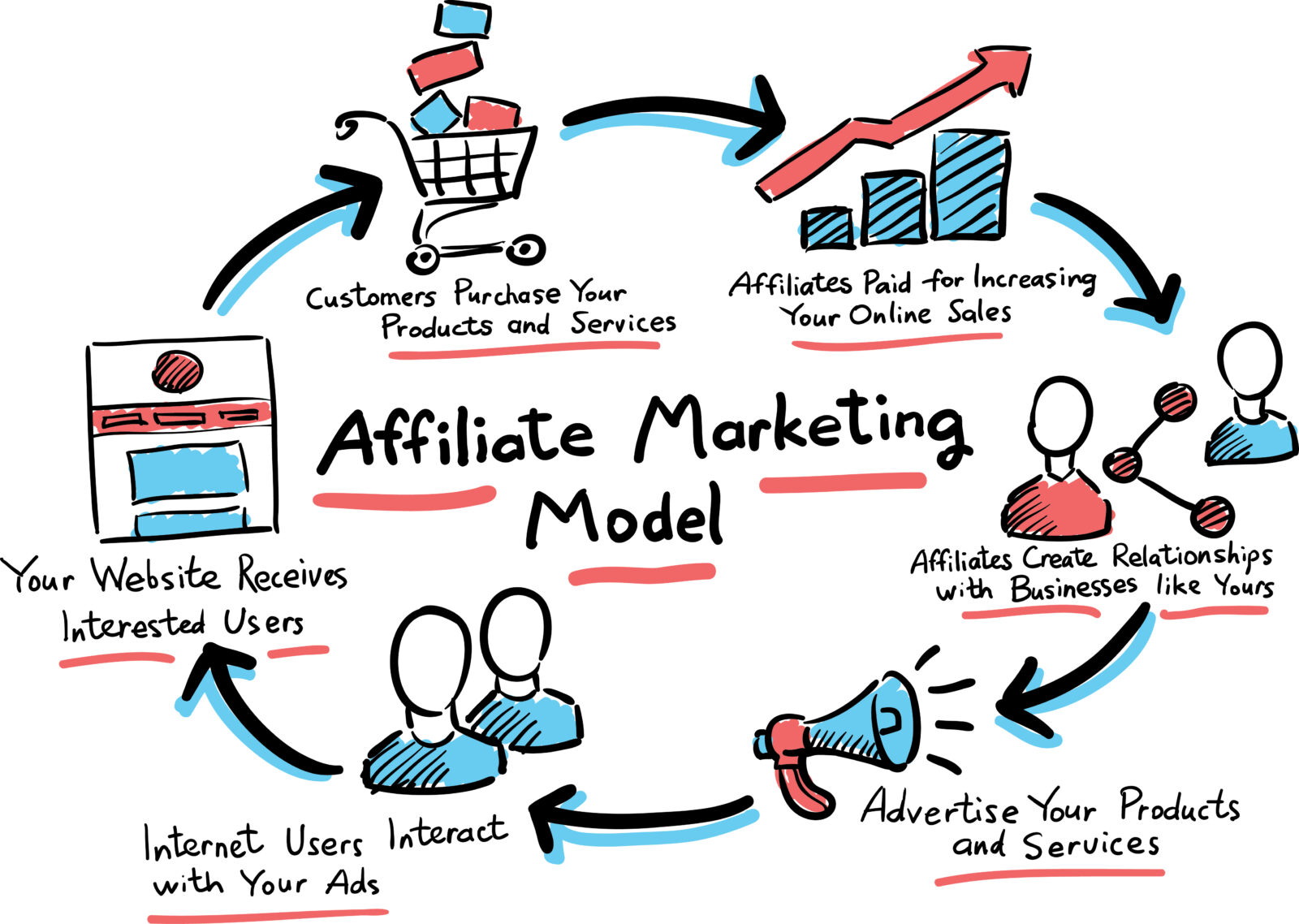
The cost is low.
While affiliate marketing can significantly boost lead volume and new patients, it doesn’t come with a high price tag. You can spend a little money or hire additional staff to get started with affiliate marketing. You can start with a free account. Besides, you only pay if an action is taken.
It’s easy to track results.
With an affiliate program, you can track how well your program performs at any time. You can view your sales/leads, revenue, and commission amounts by date within the affiliate network dashboard.
It’s highly targeted.
Affiliate marketing is a highly targeted form of marketing. When you use an affiliate network, you can select the ads displayed based on your potential patients’ interests and demographics.
How to join an affiliate network
Joining an affiliate network is the first step to becoming an affiliate merchant. Affiliate networks provide you with the tools and resources you need to run your affiliate marketing campaign. When you join an affiliate network, you get the following:
Access to a marketplace of promoters
Affiliate networks have partnerships with thousands of marketers. This means you have access to a large selection of experts to help promote your practice.
Access to potential patients
Connecting to these marketers can bring new visitors to your website via organic search engine results or paid advertisements without paying for them.
Easy-to-use tracking tools
Affiliate networks provide tracking tools that make it easy to monitor your conversion.
Resource and support center
Affiliate networks have built-in resources and communities to help you when you need advice or support. They can also help you find affiliates that are a good fit for your practice and dental niche. Affiliate networks usually get paid a percentage of ‘sales.’ That means they are incentivized to make sure the campaign is successful.
Creating an affiliate marketing strategy
Once you’ve decided to partner with an affiliate network and start an affiliate marketing campaign, you need to create a strategy. Your strategy should include the following:
Which services to promote
Before you start promoting your practice, you need to decide which services fit your dental practice and niche.
How much to spend
Some networks have an advertising cost or quota. You can decide what amount you want to spend and then pick products that fit your budget.
Where to promote products
You can promote your practice on websites, social media channels, email newsletters, and any other digital property marketers own. They can even run online ad campaigns for you, but they will be paying for the ads and only charge you for the ‘conversion’ defined by you.
Frequency of promotions
You should plan to run affiliate promotions regularly. Doing so increases the likelihood of attracting new patients.
The reputation of the affiliate network
Make sure you choose a reputable one before joining them. Reputable networks will have strict policies and guidelines for affiliates and will conduct regular audits. The prevalence of fraud in affiliate marketing is rather high. So, you must be vigilant until you find a good network with good publishers.
Here is a summary of questions that need answering to set up your plan:
- Who you want to reach – Define your target audience and create personas for them.
- What you want to promote – Decide which products or services to promote.
- When you want to promote – Promote your products/services at regular intervals.
- Where you want to promote – Choose digital properties where your target audience spends time.
- Why you want to promote – Create an irresistible offer for your products/services.
- How you want to promote – Create engaging content for your affiliate links.
Managing your affiliate network
Usually, managing an affiliate network is not that time-consuming. The following tips can help you manage your affiliate network:

Track your promotions.
You should track the services you promote and the affiliate links you use. Tracking helps you keep your numbers up to date and gives you an idea of how well your program performs.
Stay within the terms and conditions.
Make sure you stay within the terms and conditions of the affiliate network. That ensures you avoid termination from the network.
Respond to inquiries.
Respond promptly and courteously if a patient contacts you with a question or concern. This shows that you’re committed to providing excellent customer service.
Affiliate marketing courses for dentists
It can be overwhelming if you’ve never done affiliate marketing before. To help ease the transition, consider taking an affiliate marketing course. There are a few affiliate marketing courses for dentists out there, including:
- Affiliate Marketing with Dr. Nathan Murray – This course introduces affiliate marketing and walks you through the entire process.
- The Complete Affiliate Marketing for Dentists Course takes a tactical approach to affiliate marketing and gives you specific steps.
- The Complete Amazon FBA Course focuses on Amazon FBA, but you can also apply the principles to affiliate marketing in dentistry.
Affiliate marketing services for dentists
As you become more comfortable with affiliate marketing, consider hiring an agency to manage your program. An agency can handle the details for you and help you achieve better results. Affiliate marketing is a marketing method that is new to most dentists. There is a learning curve. But, considering that your payment is performance-based, it is worth looking into.
Offering Promotions, the Pros & Cons
Promotions and discounts are a great way to attract new patients and increase loyalty among existing ones. However, it is essential to consider the pros and cons of providing such incentives to ensure they are practical and beneficial to the practice.
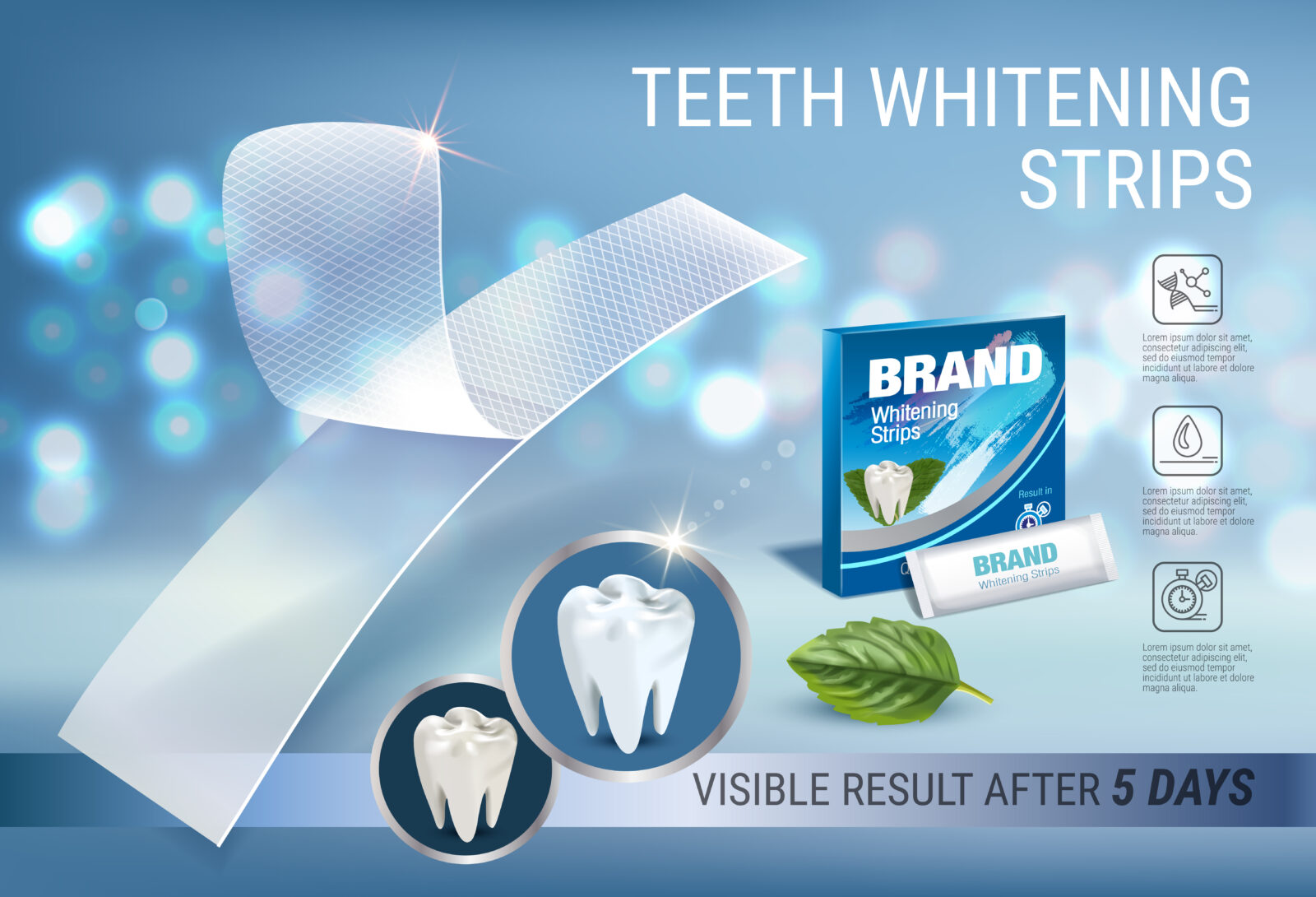
Pros
Increased foot traffic
Promotions and discounts can increase foot traffic and encourage existing patients to visit the practice more often. This can be particularly helpful during slow seasons, such as the winter or summer months, when patients may visit the practice less often than usual.
Increased patient loyalty
By rewarding existing patients with promotions and discounts, practices can help increase patient loyalty.
Increased revenue
By increasing the number of patients visiting the practice and the amount they spend, promotions and discounts can help increase revenue.

Cons of offering promotions and discounts
Negative impact on practice profitability
Providing discounts and special offers can be costly for practices and result in lower profits.
Negative impact on practice reputation
Offering discounted or free services can negatively impact the reputation of a dental practice. This can reduce the perceived value of the services and lead to patient dissatisfaction.
Increased patient expectations
While promos and discounts can increase the number of patients visiting the practice, they can also lead to higher patient expectations.

Negative effect on future growth
Offering multiple discounted or free services reduce the practice’s ability to increase prices in the future and decreases the overall profitability of the business.
Customer resentment
Offering discounted services can lead to patient irritation for those who have paid the full price.
Examples of successful promotions and discounts
10% off the next procedure
Practices can encourage new patients to come back and complete treatment plans by offering a discount on future work done within a time period.
Free teeth whitening
Offering free teeth whitening, particularly during the summer, when teeth discoloration is more common, can be a great way to attract new patients for all treatments.
New patient offer
Offering a special package for new patients, such as $100 off their first teeth whitening procedure and free teeth cleaning, can be a successful way to attract and retain new patients. This can be a good part of a new mover’s welcome package special.
Discounted group rates
Offering discounted group rates can attract and retain groups like schools, businesses, and organizations.
Free services
Giving away free services like free teeth cleanings can attract new patients. It should be offered to those with a high potential of becoming long-term patients, like new movers.
Refer-a-friend program
Giving existing patients a discount if they refer their friends to the practice can successfully attract new patients. Consider local regulations.

Best practices for offering promotions and discounts
1) Communicate clearly
Ensure that your business communications, including social media posts, are clear about the promotion or discount offered. You want to encourage people to refrain from bargaining with you whenever they need treatment.
2) Choose the proper promotion for your practice
Ensure that the promotion or discount being offered aligns with the brand of your dental practice.
3) Match the promotion to the patient
Ensure that the promotion or discount is relevant to the patient you want to attract. Free teeth whitening is not a great promo to run by a pediatric dentist.
4) Offer fair and consistent pricing
While some patients may appreciate discounted services, others may resent paying full price if the same treatment is offered at a lower price later.
5) Offer short-term promotions
Promotions and discounts are most effective when they are short-term, such as one week or one month only.
6) Ensure that you can deliver on the promotion
Ensure that the promotion or discount offered is realistic and can be provided.
7) Measure the success of promotions and discounts
Track the success of promotions and discounts to ensure they are effective and meet business goals.
8) Update promotions regularly
Regularly update promotions to ensure that they stay fresh and relevant to patients. Don’t run the same promo constantly, and don’t extend the deadline. Run ads without any promo once in a while.
9) Don’t play games
People hate being played with promotions. For example, if your ad says 20% off of crowns and then you tell patients it only applies to full metal crowns, don’t expect that person to become a long-term patient. It may bring you more money in the short run, but it will definitely hurt your business in the long run.
10) Start with the right intention.
Ensure that the promotions and discounts offered are intended to benefit patients, not a quick fix to a business problem.
11) Be strategic with your choice of promotion.
Promotions and discounts are most effective when they are relevant to the customer and the business.
12) Come up with new ideas for a promotion.
You can’t use the same promotion as your competitors, so you must get creative.
13) Offer a variety of promotions.
By offering various promotions, you can attract different types of customers. For example, you can submit a family promotion. Or a second treatment discount. At any given time, you need promotions that target different audiences. For example, if you are a general dentist, you need promotions for each of these groups:
- New movers
- kids
- Cosmetic dentistry patients
- Elderly
14) Consider the impact on revenue.
While it is crucial to offer promotions and discounts, you want to maintain your profitability.
15) Consider legal matters
Conduct research – Before offering any promotion or discount, conduct research to ensure that it complies with state or federal laws.
Digital Marketing
Online Advertisement in Dentistry
How to take advantage of paid ads on the internet to grow your dental practice?

Through social media, search engines, and other website ads, dentists can use various methods to reach their target audience and build a successful online presence using paid online ads.
Pros and Cons of Online Advertisement
Advantages
- Access: Reach a larger audience quickly
- PPC: Option to pay per performance only
- Targeting: Ability to target different patient segments
- Demographics: Targeting based on interests, and location
- Quick: Faster and more flexible than print marketing
- Cost-Effective: More cost-effective than traditional marketing
- Tracking: Easier to measure the effectiveness of ads
- Web Visits: Increase website traffic and brand recognition
- Live: Monitor, adjust, and refine campaigns in real-time
- DIY: Ability to be managed by one person
Disadvantages
- Costly: Online advertising can be expensive, especially if not done correctly.
- Time-consuming: Managing online campaigns require time and resources to monitor, update and adjust the campaigns.
- Targeting: Targeting the right audience can be challenging.
- Competition: With the vast amount of online ads, it isn’t easy to stand out.
- Unreliable Results: Online ads and marketing results are challenging to track and measure, so it is hard to know if the money spent was adequate.
- Changes: The field changes very fast and often. It is challenging to stay up-to-date and informed about these changes.
- Privacy: There are privacy concerns with online ads, as they use customer data.
Different types of online ads
Various digital advertising options are available to dental practices including:

1. Search engine marketing (SEM)
SEM is an affordable and effective way to reach potential patients. It involves buying ads in search engine results pages and running pay-per-click (PPC) campaigns to drive more traffic to the practice’s website.
2. Social media marketing
SMM involves creating targeted campaigns on social networks like Facebook, Instagram, Twitter, and LinkedIn to engage with prospective patients.
3. Display advertising
Image ads involve placing ads on websites related to dentistry and oral health, as well as other websites that target the dental practice’s demographic. Ads can be targeted to specific geographic locations and demographics, making them highly effective for local businesses.
4. Video advertising
Video ads involve displaying your video on video networks like YouTube.
Platforms
Many different online advertising platforms are available; each has unique features and benefits. Some top platforms include Google Ads, Facebook Ads, Bing Ads, Amazon Advertising, LinkedIn Ads, Twitter Ads, YouTube Ads, and Instagram Ads.

Google Ads is one of the most popular online advertising platforms and offers a wide range of options, including search engine advertising, display ads, video ads, and remarketing. This platform uses an auction system to determine ad placement and pricing and also allows advertisers to target specific audiences based on their interests, demographics, and behaviors.
Facebook Ads is another popular online advertising platform allowing businesses to target their ads to people based on their age, gender, location, interests, and more. With Facebook Ads, businesses can create customized campaigns to reach their desired target audience.
Bing
Bing Ads is a Microsoft-owned platform similar to Google Ads but with slightly different features and capabilities. Bing Ads allows advertisers to target their ads to people based on their search history, demographics, and interests.
Amazon
Amazon Advertising is a powerful platform for advertising products and services on Amazon.com. Advertisers can create ads on product pages, in search results, and on other Amazon websites. The platform also allows advertisers to optimize their campaigns in real-time and measure the performance of their ads. Amazon may not be the best place for dental office ads, but sometimes at the right place, it offers a great low-cost opportunity to promote your practice.
LinkedIn Ads are mainly used to target professionals and business owners. Advertisers can create ads that appear in the news feeds of LinkedIn users and on various other parts of the LinkedIn platform. You can use LinkedIn Ads to promote yourself and spread name recognition or directly advertise your practice by targeting people in your area.
Twitter Ads is an excellent platform for targeting a younger audience and those who may be interested in a specific topic.
Pinterest ads can be excellent for dental practices, especially those targeting female patients. Pinterest ads allow you to create images and text ads that will appeal to people searching for products in your category and allow you to pin them to a board related to your dental practice.
Google VS Bing VS Yahoo
- Google has the most users (1.17 billion), followed by Yahoo (292 million) and Bing (267 million).
- Use Google Analytics to understand your website traffic and demographics and target potential clients through PPC ads.
- Bing and Yahoo are essentially the same since Bing controls Yahoo’s search engine.
- Google AdWords is more expensive than Bing Ads, but Google reaches more people.
- Targeting both Google and Bing/Yahoo for maximum ROI is best.
- Google offers more keyword flexibility than Bing.
Definitions of Advertisement Techniques
PPC
PPC means pay-per-click. It is one of the easiest and most effective ways to advertise online. It is also the most common form of digital marketing. You will be charged for each click on your ad. In other words, you only pay when a prospective patient visits your site.
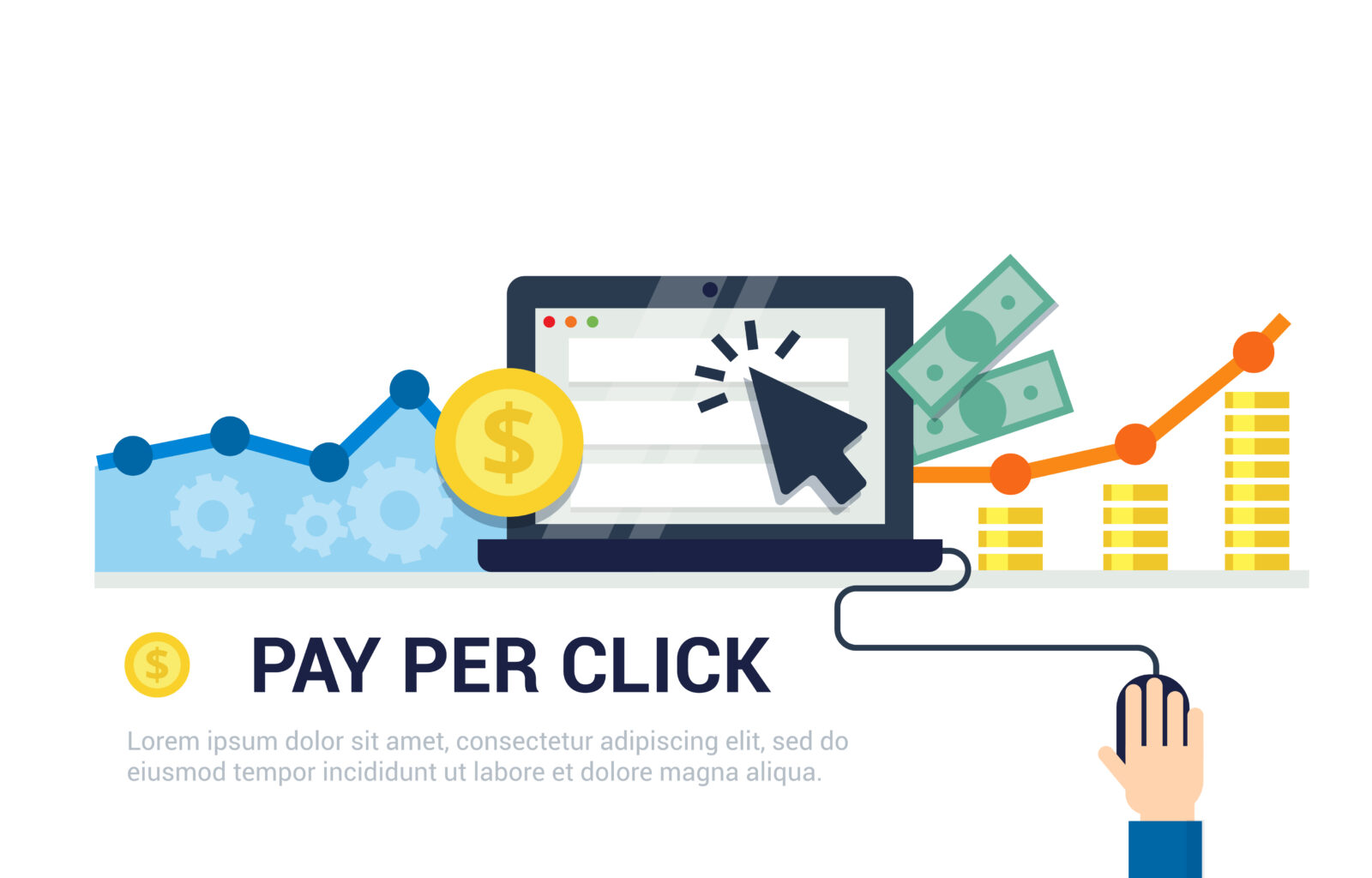
The price you pay for each click is determined by an auction process within the search engine so the actual cost could vary. PPC ads are best for businesses that want to drive website traffic and generate leads but are not focused on building a long-term brand presence.
PPC ads are highly targeted and help reach people actively looking for your services. You can use different strategies to create and optimize a PPC ad campaign for your dental practice. Later we discuss the details of designing a successful PPC campaign.
Social Media Ads
Social media networks are the best places to run image ads but also allow video ads. Facebook and Instagram are great platforms for image ads. Twitter is also a good platform for image and text ads. However, Pinterest is a better option for dental practices that want to run image and video ads. For dental practices looking to run video ads, YouTube is the best platform.
Type of Display Ads
Video Ads
Video ads are an excellent way for dental practices to catch the attention of potential patients. You can create simple videos that show what your dental practice does and how it can benefit patients. There are also apps available that allow you to create short videos. You can then upload the video to YouTube, Facebook, or other social media networks.

Image Ads
Image ads can also be effective for dental practices. You can post them on Google Display Network, Facebook, and Instagram. You can also create ads for your website and pin them to a board on Pinterest.
How Changing 1 Word Saved Me $3000 in Ad Costs
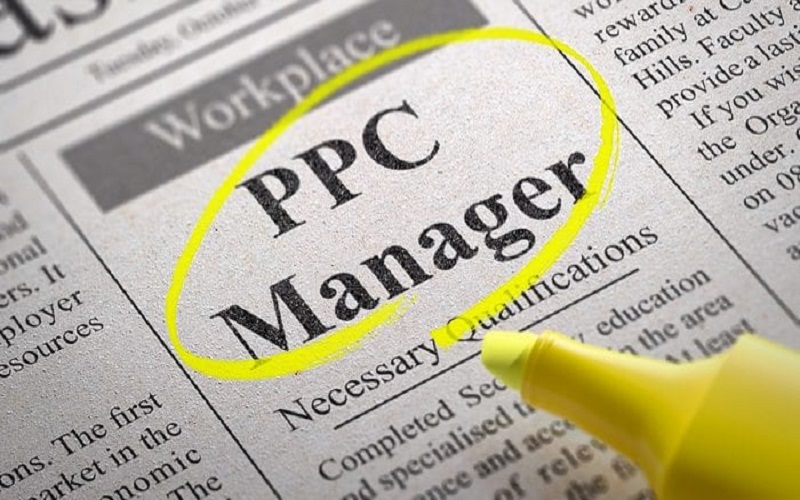
Google’s main objective, which has made them successful over the years, is providing an optimum user experience. That means that Google intends to help web visitors find what they want. One way Google determines this is by measuring CTR (Click Through Rate) in the middle column in the screenshots below).
In a scenario where two people click on your Google Ad every 100 times it has been displayed, you would have a 2% CTR. Google encourages its advertisers to maintain good CTRs because this means people are finding what they were searching for. Google makes more money, and you, the advertiser, get great exposure and will save some money.
Think of it this way. Google has more advertisers than it can serve. Let’s say you have a nice CTR of 5%, and another advertiser has a 2% CTR. So, if Google shows your ads 100 times, your ad can expect to get 5 clicks, and the other doctor will only get 2 clicks. Now, if Google wants to make $20 from the 100 impressions (each time the advertisement is shown), it needs to charge you only $4 per click, but the other doctor has to pay a whopping $10 per click!
Imagine you both get the same patients to your website, but he paid $10 for him, and you paid only $4 for each visitor. Now if he wants to outbid you, he needs to bid $11 ($22 total), but you can turn around and $5 ($25 total), and he is out again.

In contrast, after removing “#1…” and “Top-Rated,” this campaign’s new ads’ best CTR is 2.4% and a $9.89 per click cost. That is an almost 25% increase in cost. You can now easily see that in the long run, and with a $1,000 budget, simply changing a few words like “#1” can save you $3000 per month!
Video Marketing
If you’ve logged onto Facebook, Instagram, Twitter, or any other popular website, chances are you’ve seen an influx in the number of videos available. Whether you’re looking to change a tire, take up yoga, or find the best way to floss your teeth, there’s a video out there to help tutor you through the process.
Videos are an incredibly powerful teaching tool. They help get the message across to your audience in a way that’s easy to digest, understand, and share. Each of these factors are component of viral videos – videos that catch on quickly.
If you’re a dentist looking to integrate videos into your marketing strategy, you’re probably wondering where to start. After all, videos for dentists probably sound like they wouldn’t be very entertaining or fun. The good news is you can create your own videos that appeal to your unique audience. By inserting your personality into your videos, you’re educating patients and showing them who you are. You’re being transparent, and people appreciate that.
A Note About Captions

Before you start any video production, you’ll want to ensure you have a transcript to follow to make adding captions to your video easier. A recent study showed 80% of people watched videos without audio. This means that captions are a crucial part of getting the message across.
Additionally, captions help make your website more easily accessible to individuals with hearing loss. This is an incredibly important point as more and more practices are working toward making their websites ADA-accessible to accommodate their patients with disabilities. Learn more about website accessibility here.
In addition to captions, if you decide to embed your video on your website, you should include a copy of the transcript (preferably as an added link or an accordion box that expands). This helps with SEO, as it allows search engine spiders to pick up on the content of that page (and video) and then index it as they see appropriate.
Encourage Social Sharing
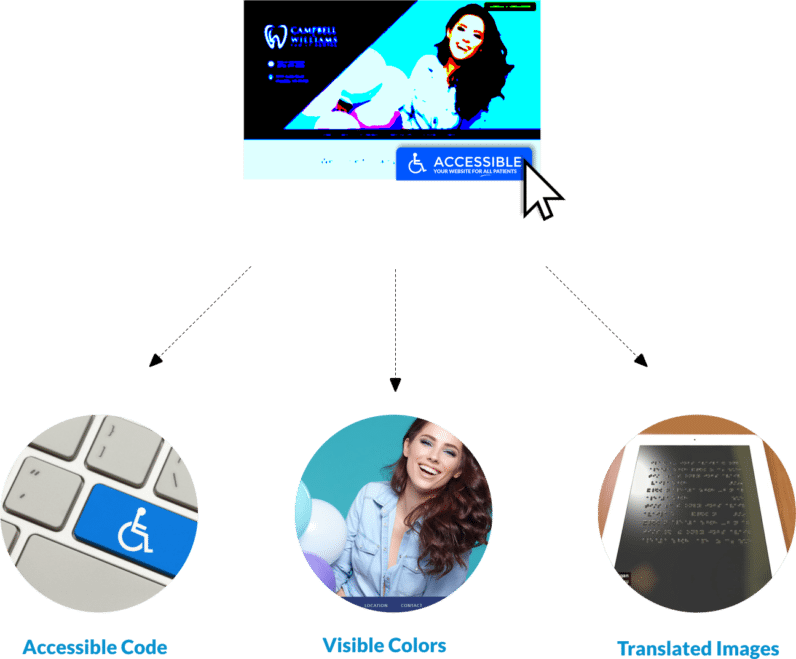
The power of videos is in their ability to be shared and viewed on many devices. Whether you’re putting videos on your website, Facebook, or YouTube, remember always to encourage people to share your videos. Do this by including a share button on your website, clear text that tells people to share, and icons that indicate sharing as an option.
Social shares lend credibility to your videos and also help spread the word organically. This ultimately results in more leads at a more affordable rate than other methods.
What type of videos should I post?

The dental videos you post will depend on your overall marketing strategy. Each dental practice should have an editorial calendar that breaks down the goal of each post, what the content consists of, and when it will be posted. Aligning your videos with this document will ensure they’re doing what they’re supposed to do: working for your practice.
There are several types of videos that you can post. When determining what aligns with your marketing strategy, it’s also important to think about what you have the capacity to produce. Perhaps you want to do a five-part series on root canals but only have time for two parts. Consider the time commitment and budget for every video you produce.
Testimonial Videos
Testimonial videos are powerful videos that tell viewers what your practice can do for them through storytelling. Imagine a patient looking for veneers. Perhaps they had a nutritional deficiency as a child or a unique story that made their case compelling. Imagine you take their case on and give them a beautiful, white, shiny smile.
Once they’ve healed, you could record their story, talk about what you did, and produce a short video that tells people several things. First, you take the time to serve patients. Second, that you have the skills to help them meet their goals. And finally, you’re the person for the job.
The testimonial video will get your message across. When done well through the use of motivating storytelling techniques, your video will likely be shared across social platforms like Facebook and Twitter.
Walk-through Videos
Walk-through videos are tutorial videos that help educate patients about oral care routines they can do at home. These videos seek to answer some of the most common questions about things like flossing and brushing and show the proper technique.
They’re essentially free educational resources that can be shared with local and national audiences.
Creating a high-quality walk-through video is about more than just covering a topic. You’ll want to be engaging, get people excited, and clearly illustrate every point you discuss. In doing so, you’re helping encourage those who might be scared of the dentist or unable to afford treatment to do what they can to keep their mouth as healthy as possible.
Procedural Videos
The procedural video is more educational and will provide viewers with a thorough review of the procedure. These videos provide a great opportunity to educate patients about the ins and outs of a procedure. It also creates the chance to develop trust with your patients as you share your knowledge.
One of the most powerful parts of a procedural video is that you can actually preemptively ease any worries patients might have about the procedure. As you share with them your skills, you’ll remind them they’re in good hands, that you’re a professional, and that your office is the best choice for their needs.
How to determine the budget for ads
Before diving headfirst into an ad campaign, you must know what to expect from these ads. The best way to determine your budget is to understand the goals and objectives of your ad campaign. You should know who you target and how you want to reach them. You should also know the level of competition for your services and the projected ROI (return on investment) from your ads. Once you know these things, you can plan for an appropriate budget for your ad campaign.

One raw number is allocating $100 to $200 per patient. Meaning spending $200 for each patient you would like to attract. Also, another recommendation referred to is 10% spending. That means spending 10% of your gross revenue on marketing. But, if you are a new practice or a practice with a small revenue stream, 10% of the gross is still a tiny number. In that case, you should spend 10% of your goal. If you want to make $50,000 in gross revenue per month, spend $5,000 per month for 6-12 months to reach to that level gradually.
Learn how to save money in PPC marketing.
Do it yourself or hire a professional
If you’re considering using an ad management company, ensure they have experience running digital marketing campaigns for dentists. It is also good to ask other dentists who they use to run their digital ad campaigns. A good ad management company should be able to provide you with the following:
- A detailed campaign plan: The company should be able to outline its strategy for running your ads and provide you with analytics reports.
- Problem-solving skills: The company should be able to address any issues that arise quickly.
- Transparent pricing: They should be very clear about the breakdown of fees. How much of what you pay goes to ads, and how much are their management fees?
If you decide to do it yourself, here are some popular marketing tools among dentists. Remember that the trial-and-error way of learning online marketing can be very expensive.
Tracking Results
There are a few ways that dental practices can track the results of their ad campaigns and analyze the performance of their ads. They can use ad management software to track their ad campaigns. This software will provide them with detailed analytics reports. They can also use Google Analytics to track and analyze their ad campaigns. I would suggest using what is easiest for you. That ensures something is done, at the least.
Online ads are the most potent marketing tool online. Experience and expertise determine whether you can succeed in running these campaigns.
Defining Your Patient’s Personas & Demographics
Personas
- Developing a buyer persona is crucial for planning a dental practice’s marketing strategy.
- A buyer persona involves understanding prospective patients’ motivations, expectations, and pain points.
- To create a buyer persona, consider
- The priorities
- Success factors
- Perceived barriers
- Buyer’s Journey
- Decision criteria
- Commonalities
- Important questions buyers ask
- The day in the life section of the persona should be about 300 words and tell the story of what the persona’s concerns, motivations, and decision-making criteria are
- Understanding the buyer persona will help frame marketing campaigns and create a copy.
Demographics
- Understanding the demographics of your patients and potential patients is crucial for developing an effective dental marketing strategy.
- Demographics include statistical data such as age, race, income, and sex and can help you understand patient motivations and unique needs.
- Gathering demographic data is important for setting fair prices, choosing the best images and language for marketing campaigns, and developing effective marketing plans.
- Data can be obtained through Google Analytics and studying website behavior and can save money by targeting only the most interested individuals.
- Demographics also play a role in web design, email marketing, and non-digital marketing efforts.
The Difference Between Marketing & Sales
In the game of dentistry, a well-coordinated team is crucial to achieve a common goal. From the front desk staff to the dental hygienists, each team member is vital in steering your practice toward success. However, even a high-performing team may experience a slump when phone calls come in, but new patients are not walking through the door. This signifies a disconnect between marketing and sales. The silver lining is that online marketing can help bridge this gap and bring in the right patients.
Sales and marketing have different roles in the dental business. Sales professionals operate from within the practice and interact with existing and prospective patients. Their primary focus is on short-term goals, such as increasing patient conversion rates. On the other hand, marketing personnel views things from the outside, taking a customer-centric approach to form connections with prospective patients and foster continued growth in the long term. Online marketing is integral to your long-term strategy to reach your target audience and eliminate the need for a hard sell.
Online marketing strategies are designed to pre-filter your desired audience, ensuring that you get phone calls from potential patients actively seeking your services. Experienced online marketing strategists will carefully optimize your dental website and social media presence to attract the right prospects to your practice. Mobile compatibility and fast loading times are essential to creating a user-friendly and visually appealing website that resonates with your target audience.
By adding tracking phone numbers and clickable call buttons to your ads, prospective patients are more likely to contact you. An increase in click-through rates of approximately 4-5% can be seen for ads that include call extensions. In addition, tracking phone numbers enables you to monitor your marketing strategies’ performance, including which ads generate actual phone calls and website visits. This data lets you identify which marketing channels work best and allocate your resources accordingly.
Online marketing teams are invaluable to dentists who are business owners aiming to stand out in a competitive field. A custom web presence can make all the difference in setting you apart from your competitors. As you work with your marketing team, you can set a budget for start-up and ongoing services that fit your needs. Marketing is a long-term tool that requires continuous monitoring and adjustment to maintain its effectiveness in bringing in new patients.
Lastly, marketers and salespeople must work together to maximize the potential for success. Effective sales representatives can provide feedback to the marketing team about customers’ needs and preferences. On the other hand, marketers can enhance sales by targeting prospects who are actively searching for your services.
In conclusion, online dental marketing is a valuable tool for connecting with the right prospects and bridging the gap between marketing and sales. You can ensure a steady stream of new patients by pre-filtering your target audience, optimizing your website, adding tracking phone numbers, and budgeting wisely. You can establish a dental practice that stands out from the rest through close collaboration between marketing and sales.
Creative Referral Programs
Community outreach and referral programs for dental practices are excellent ways to build relationships.

Ideas for Event Marketing for Dentists
Here are some ideas for marketing events that you could host as a dental office:
1. Open House
Invite potential patients, local businesses, and other professionals in your community to attend an open house event at your dental office. Use this opportunity to showcase your services and introduce your staff members. Provide refreshments and offer promotional materials and giveaways to attendees.
2. Patient Appreciation Day
Hosting a patient appreciation day event will show your existing patients how much you care for them. Offer special discounts and promotional services exclusively to current patients. Have your staff members provide demonstrations of dental hygiene tips and techniques.
3. Health Fair
Participate in a health or wellness fair in your community. This is a great way to reach people in your area who may need to become more familiar with your practice. Set up a booth and hand out informational brochures about your services and gifts like a toothbrush. Make your staff available to answer questions.
4. Community Outreach Events
Host or participate in events in your local community, such as volunteering at a soup kitchen, sponsoring a 5K run, or holding a free dental care clinic. These events will not only help to create awareness of your practice but will also show your commitment to supporting the community.
5. Educational Events
Host workshops and seminars in your dental office, providing information on oral health and preventive care.
6. Invitation Events
Invite local businesses, medical doctors, and other dental professionals to learn more about your practice.
By hosting these types of events, you can increase visibility for your practice and create relationships with potential new patients.
7. Holiday Events
Invite people in your neighborhood, or use signs to encourage them to stop by the office and distribute gifts and other items related to the event. Here are some appropriate events:
- Halloween
- New Year
- Easter
- Christmas
Being active in your community serves two purposes. It helps you grow your practice and is the right thing to do.
Marketing Tools for Dentists
There are several types of online marketing programs that dentists can use. Here is the list of the most popular ones:
Patient communication systems
Here are some popular ones:
- Doctible
- Weave
- Lighthouse 360
- Nexhealth
Reputation management software
Here are some popular ones:
- BirdEye
- Podium
- Swell
Search tools
Here are some popular ones:
- SEMrush
- Ahrefs
- SpyFu
Email marketing software
Here are some popular ones:
- MailChimp
- Constant Contact
- Campaign Monitor
Social media management software
Here are some popular ones:
- Agorapulse
- Sprout Social
- Hootsuite
Website builders
Here are some popular ones:
- O360
- Elementor
- Wix
- Squarespace
How to find a great dental marketing company?
Make sure you work with a company that:
- Specialized in dentistry
- Has more than 1-2 years of experience
- Has trust-worthy references
- Does not require a contract
- Is available when you need them
Read more details about how to find the best marketing company for your practice.
Resources
A design template system that can be used to design postcards, social media posts, and many other visual ads.
A blogging system that allows creating a blog for free and offers tons of helpful tools to thrive as a blogger. Note that WordPress.com is a service different from WordPress, the CMS used to build websites.

